inbox and environment news: Issue 550
August 14 - 20, 2022: Issue 550
Public Meeting On Northern Beaches Aboriginal Lands Approval By State Government
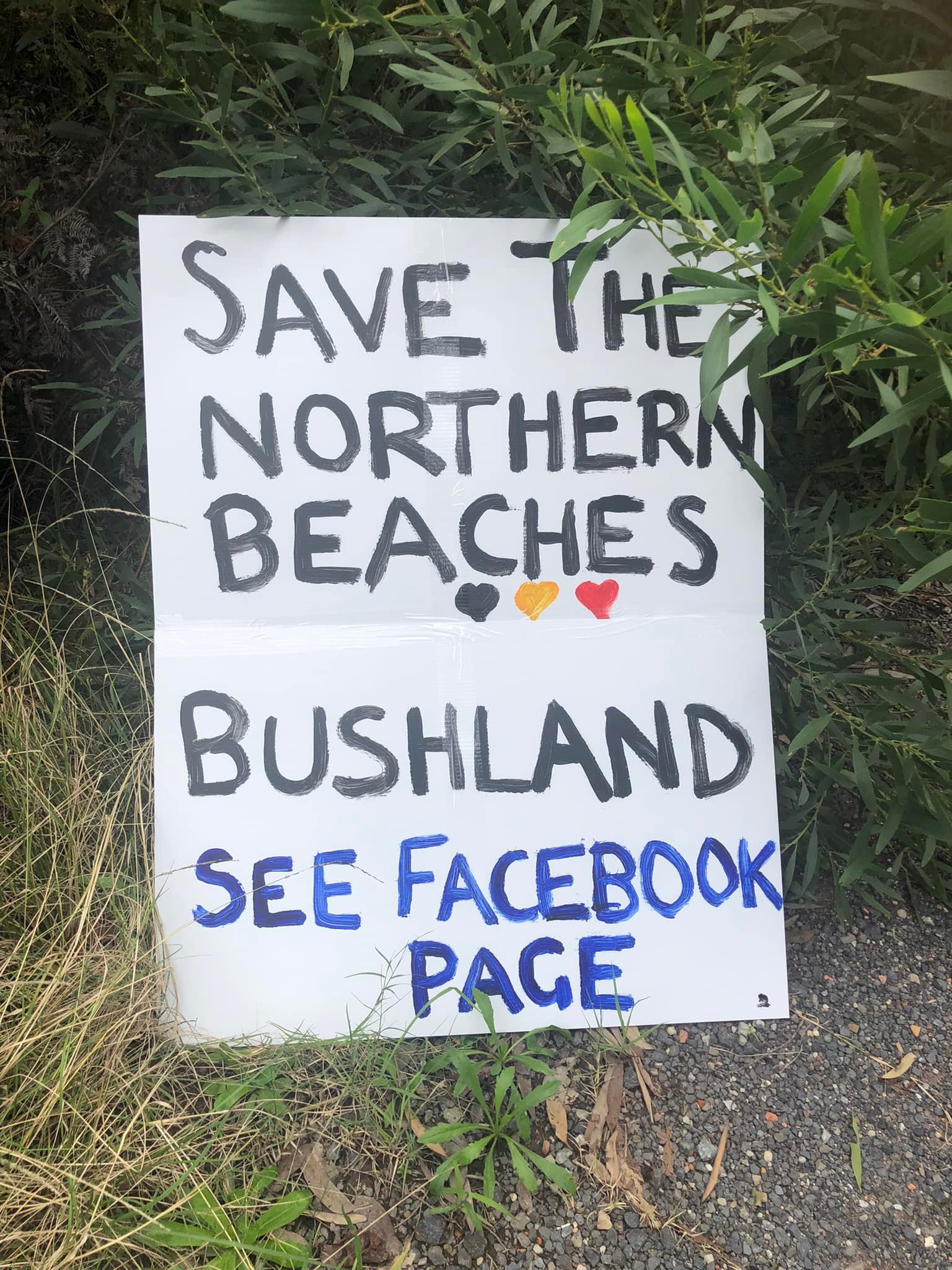
Bushfire Affected Species Listed As Threatened
Glossy Black-Cockatoos Added To Federal Threatened List
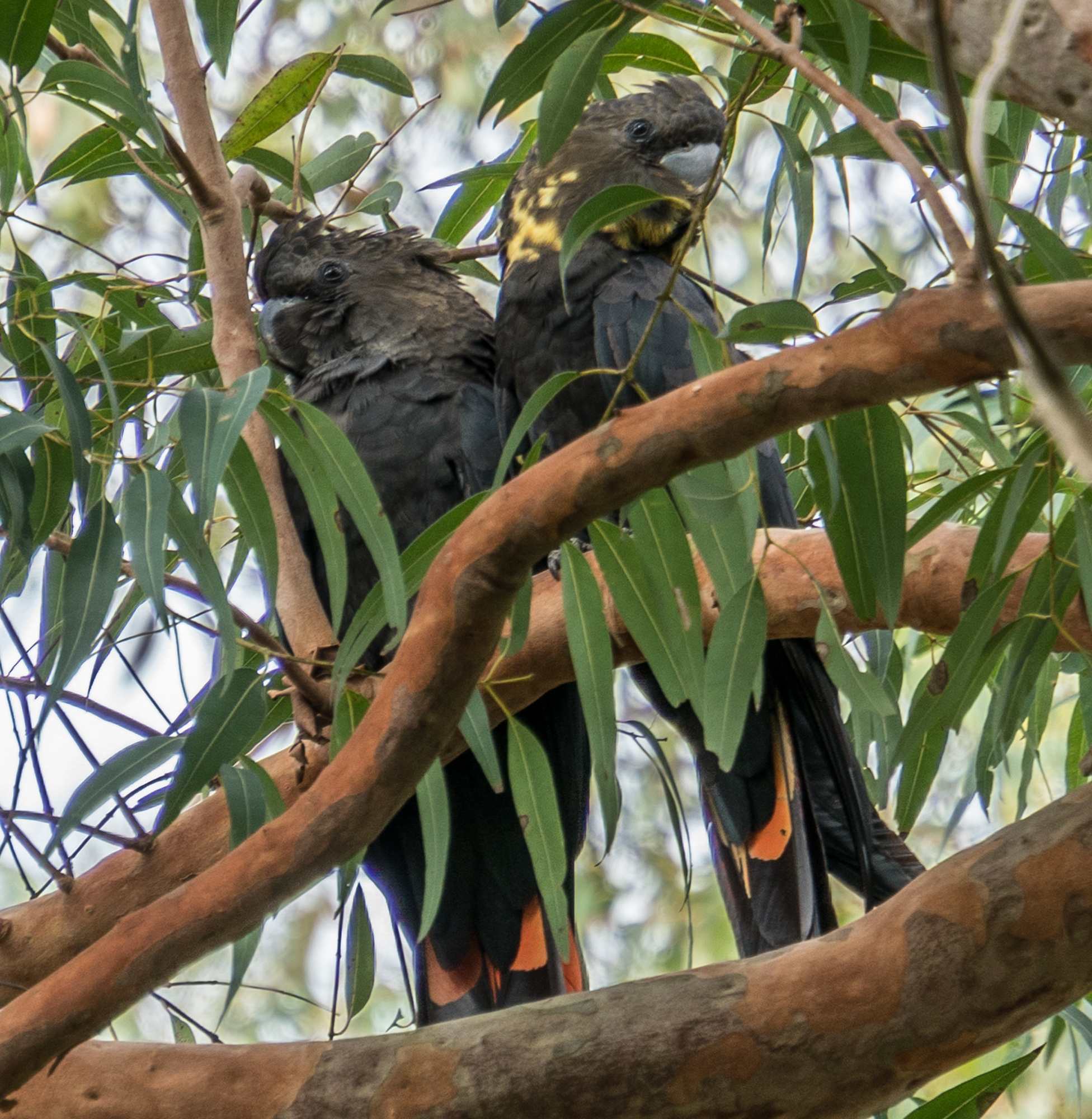
Vale Peter Higgins
1959–2022
Tasmanian Birdlife Cull
Careel Creek Birds Seen This Week
Magpie Breeding Season: Avoid The Swoop!
- Try to avoid the area. Do not go back after being swooped. Australian magpies are very intelligent and have a great memory. They will target the same people if you persist on entering their nesting area.
- Be aware of where the bird is. Most will usually swoop from behind. They are much less likely to target you if they think they are being watched. Try drawing eyes on the back of a helmet or hat. You can also hold a long stick in the air to deter swooping.
- Keep calm and do not panic. Walk away quickly but do not run. Running seems to make birds swoop more. Be careful to keep a look out for swooping birds and if you are really concerned, place your folded arms above your head to protect your head and eyes.
- If you are on your bicycle or horse, dismount. Bicycles can irritate the birds and the major cause of accidents following an encounter with a swooping bird, is falling from a bicycle. Calmly walk your bike/horse out of the nesting territory.
- Never harass or provoke nesting birds. A harassed bird will distrust you and as they have a great memory this will ultimately make you a bigger target in future. Do not throw anything at a bird or nest, and never climb a tree and try to remove eggs or chicks.
- Teach children what to do. It is important that children understand and respect native birds. Educating them about the birds and what they can do to avoid being swooped will help them keep calm if they are targeted. Its important children learn to protect their face.
Wanted: Photos Of Flies Feeding On Frogs (For Frog Conservation)
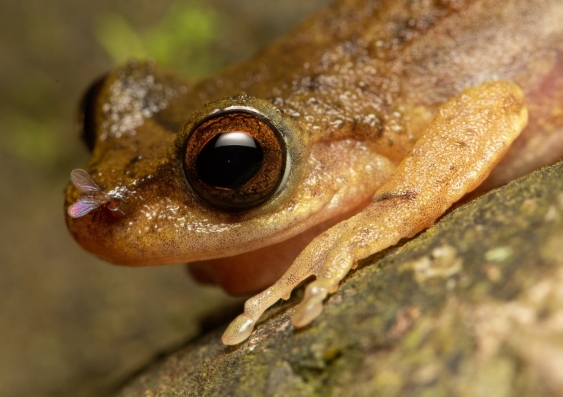
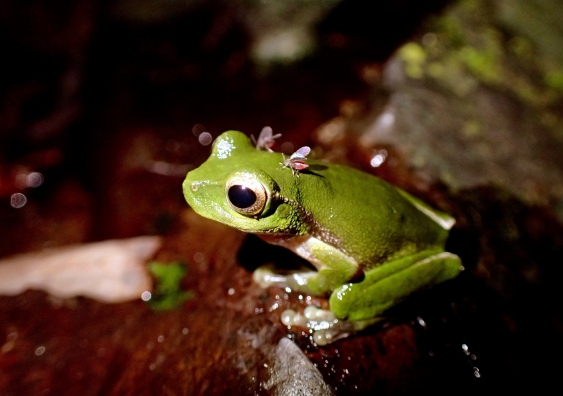
Possums In Your Roof?: Do The Right Thing

Local Wildlife Rescuers And Carers State That Ongoing Heavy Rains Are Tough For Us But Can Be Tougher For Our Wildlife:
- Birds and possums can be washed out of trees, or the tree comes down, nests can disintegrate or hollows fill with water
- Ground dwelling animals can be flooded out of their burrows or hiding places and they need to seek higher ground
- They are at risk crossing roads as people can't see them and sudden braking causes accidents
- The food may disappear - insects, seeds and pollens are washed away, nectar is diluted and animals can be starving
- They are vulnerable in open areas to predators, including our pets
- They can't dry out and may get hypothermia or pneumonia
- Animals may seek shelter in your home or garage.
You can help by:
- Keeping your pets indoors
- Assessing for wounds or parasites
- Putting out towels or shelters like boxes to provide a place to hide
- Drive to conditions and call a rescue group if you see an animal hit (or do a pouch check or get to a vet if you can stop)
- If you are concerned take a photo and talk to a rescue group or wildlife carer
There are 2 rescue groups in the Northern Beaches:
Sydney Wildlife: 9413 4300
WIRES: 1300 094 737
Please be patient as there could be a few enquiries regarding the wildlife.
Generally Sydney Wildlife do not recommend offering food but it may help in some cases. Please ensure you know what they generally eat and any offerings will not make them sick. You can read more on feeding wildlife here
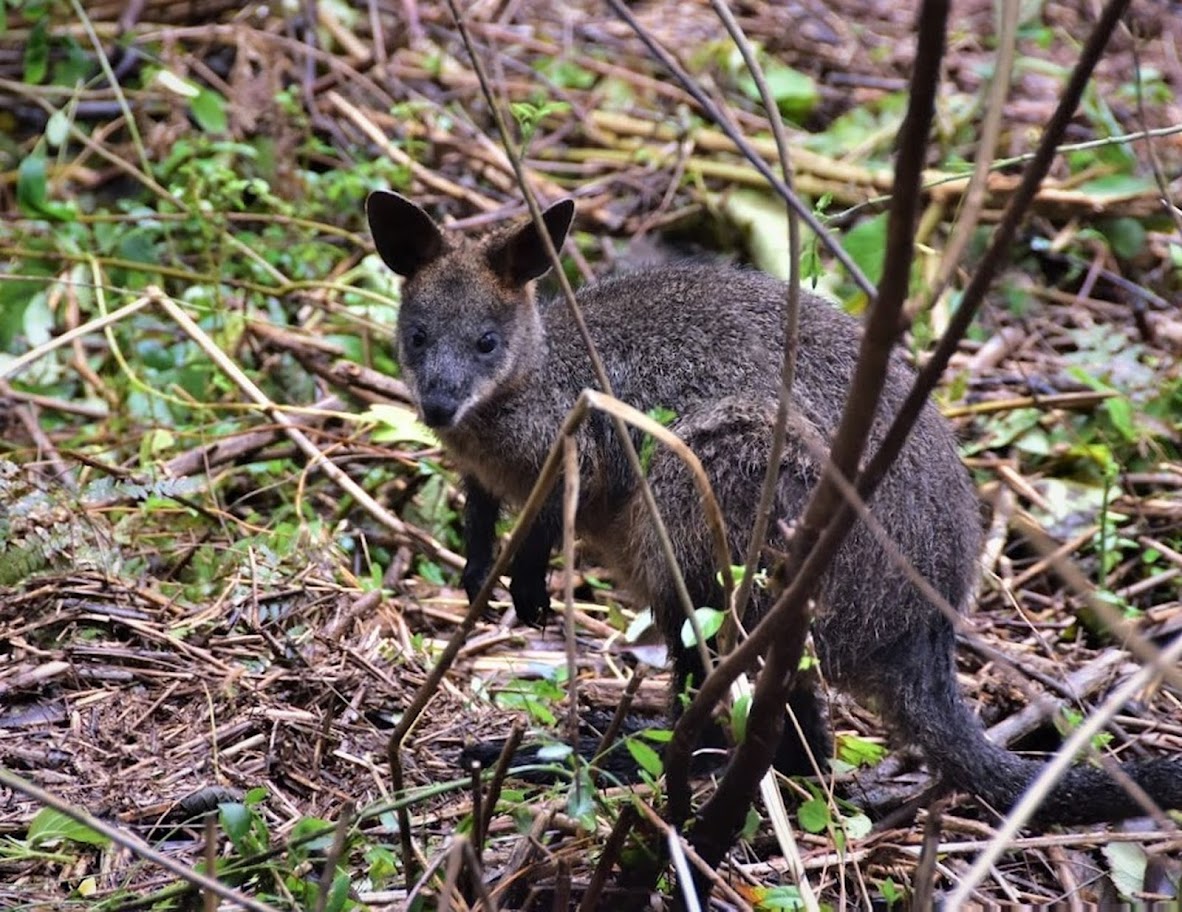
Information courtesy Ed Laginestra, Sydney Wildlife volunteer. Photo: Warriewood Wetlands Wallaby by Kevin Murray, March 2022.
Aviaries + Possum Release Sites Needed

Sydney Wildlife Rescue: Helpers Needed
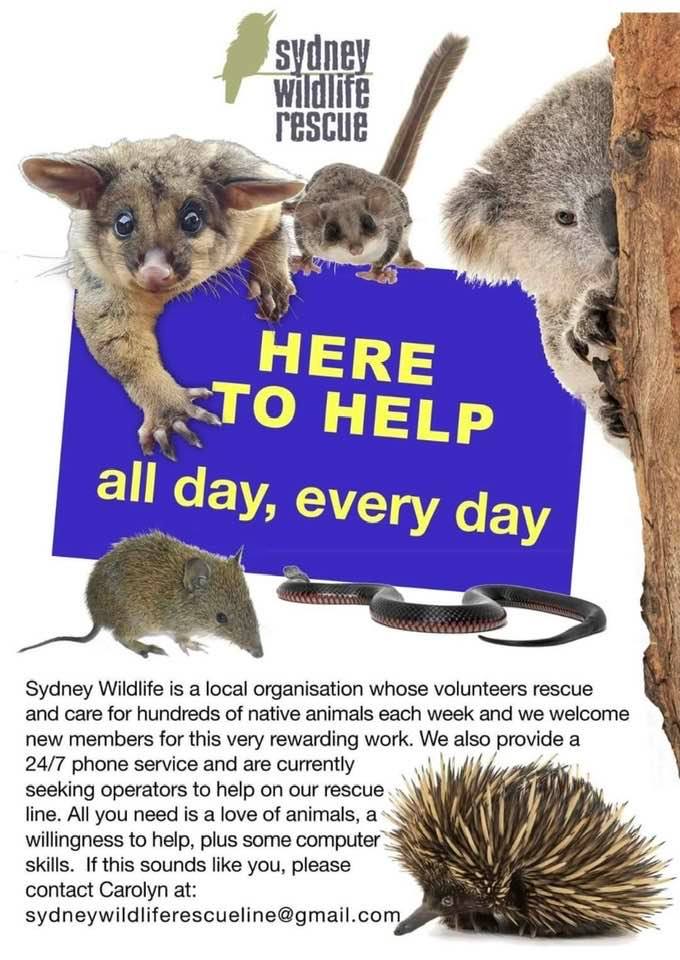
Bushcare In Pittwater
Where we work Which day What time
Avalon
Angophora Reserve 3rd Sunday 8:30 - 11:30am
Avalon Dunes 1st Sunday 8:30 - 11:30am
Avalon Golf Course 2nd Wednesday 3 - 5:30pm
Careel Creek 4th Saturday 8:30 - 11:30am
Toongari Reserve 3rd Saturday 9 - 12noon (8 - 11am in summer)
Bangalley Headland 2nd Sunday 9 to 12noon
Bayview
Winnererremy Bay 4th Sunday 9 to 12noon
Bilgola
North Bilgola Beach 3rd Monday 9 - 12noon
Algona Reserve 1st Saturday 9 - 12noon
Plateau Park 1st Friday 8:30 - 11:30am
Church Point
Browns Bay Reserve 1st Tuesday 9 - 12noon
McCarrs Creek Reserve Contact Bushcare Officer To be confirmed
Clareville
Old Wharf Reserve 3rd Saturday 8 - 11am
Elanora
Kundibah Reserve 4th Sunday 8:30 - 11:30am
 Mona Vale
Mona Vale Mona Vale Beach Basin 1st Saturday 8 - 11am
Mona Vale Dunes 2nd Saturday +3rd Thursday 8:30 - 11:30am
Newport
Bungan Beach 4th Sunday 9 - 12noon
Crescent Reserve 3rd Sunday 9 - 12noon
North Newport Beach 4th Saturday 8:30 - 11:30am
Porter Reserve 2nd Saturday 8 - 11am
North Narrabeen
Irrawong Reserve 2nd Saturday 2 - 5pm
Palm Beach
North Palm Beach Dunes 3rd Saturday 9 - 12noon
Scotland Island
Catherine Park 2nd Sunday 10 - 12:30pm
Elizabeth Park 1st Saturday 9 - 12noon
Pathilda Reserve 3rd Saturday 9 - 12noon
Warriewood
Warriewood Wetlands 1st Sunday 8:30 - 11:30am
Whale Beach
Norma Park 1st Friday 9 - 12noon
Western Foreshores
Coopers Point, Elvina Bay 2nd Sunday 10 - 1pm
Rocky Point, Elvina Bay 1st Monday 9 - 12noon
Gardens And Environment Groups And Organisations In Pittwater
National Parks And Wildlife Amendment (Reservations) Bill 2022 Passes NSW Parliament
- about 23 hectares in the Blue Mountains National Park
- about 21.41 hectares in the Conjola National Park
- about 0.3 hectares in the Corramy Regional Park
- about 3.56 hectares in the Hartley Historic Site
- about 2.35 hectares in the Limeburners Creek National Park and
- about 3.68 hectares in the Parma Creek Nature Reserve
NSW Department Of Planning Announces New Chief Executive Secured For NSW Land And Housing Corporation
Applications Now Open For 2022 Gone Fishing Day Grants
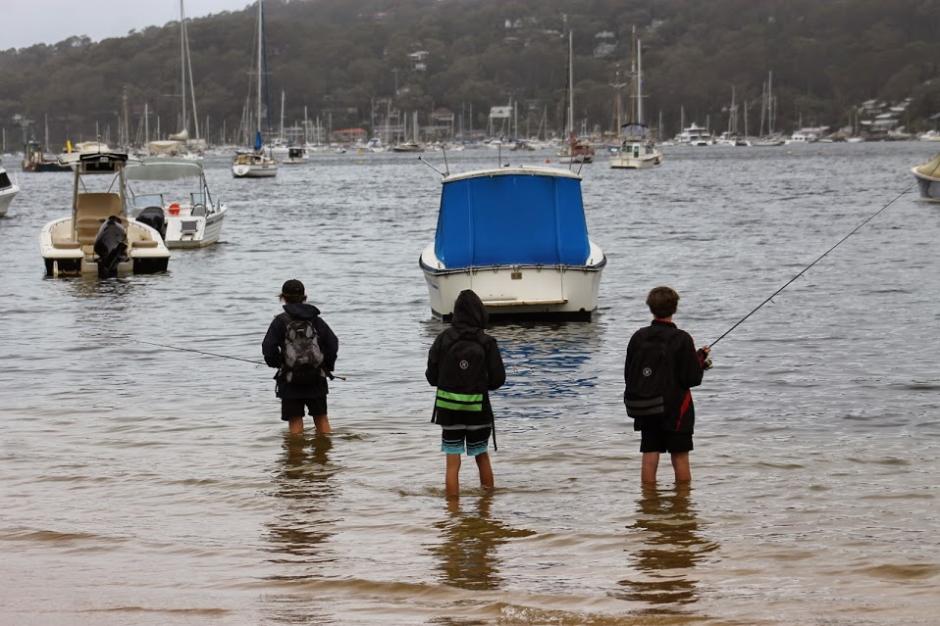
Minister Officially Opens Koala Hospital
$1.27 Million To Bolster Energy Storage In The Hunter
Queensland's Renewable Energy Sector Gets $160m Boost
Santos’ Pipeline Purchase Faces Massive Hurdles As Landholders Line Up Against It
QLD Farmers Given Just Days To Respond To Massive Gas Threat
Historic new deal puts emissions reduction at the heart of Australia’s energy sector

Australia’s energy ministers on Friday voted to make emissions reduction a key national energy goal, in a major step forward in the clean energy transition.
Federal, state and territory energy ministers agreed to include emissions in what’s known as the “national energy objectives”. The objectives guide rule-making and other decisions concerning electricity, retail energy and gas.
Announcing the deal on Friday, Climate Change and Energy Minister Chris Bowen said it was the first change to the objectives in 15 years. He added:
This is important, it sends a very clear direction to our energy market operators, that they must include emissions reductions in the work that they do … Australia is determined to reduce emissions, and we welcome investment to achieve it and we will provide a stable and certain policy framework.
The agreement comes not a moment too soon. To meet Australia’s net-zero goals, variable renewable energy capacity must increase nine-fold by 2050. That means doubling Australia’s renewables capacity every decade. So let’s take a closer look at what the deal means.
Prioritising Emissions Reduction
A body called the Australian Energy Market Commission (AEMC) makes the rules for the electricity and gas market. It must refer to the national energy objectives to guide the formation of these rules.
The exclusion of emissions from the objectives meant the commission did not have to consider the long-term climate implications of the rules it set. Instead, the objectives mostly meant the commission considered the price, quality, safety, reliability and security of energy.
This limited scope meant some investment decisions by the commission were based on short-term economic grounds. For example, these old regulations required a transmission company to maintain diesel generators rather than build a world-first clean energy mini-grid near Broken Hill, New South Wales.
Other jurisdictions worldwide already include sustainability objectives in electricity laws.
For example, a principal objective of the United Kingdom’s Electricity Act 1989 requires officials to protect the interests of existing and future consumers. The first listed priority is the need to reduce greenhouse gas emissions from electricity supply.
What Has Its Exclusion Meant For Projects?
The environment used to be included in the objectives, but the Howard government removed it more than two decades ago. The move was a major setback for climate action and the transition to renewable energy.
The energy market operator may consider the environmental or energy policies of participating jurisdictions to identify effects on the power system. But Friday’s deal means consideration of emissions would no longer be optional for the commission.
The traditional principles of efficiency and reliability are, of course, still crucial to energy systems. Yet, the ongoing energy crisis shows we must invest in a suite of technologies to reach net-zero goals while assuring future energy security.

Ensuring The Transition Is Fair
Including emissions in investment decisions is crucial for planning the future of the National Electricity Market. Some states are making excellent progress.
For example, New South Wales has mapped five “renewable energy zones” to replace ageing coal-fired generators. The roadmap’s objectives explicitly include improving “the affordability, reliability, security and sustainability of electricity supply”.
A successful energy transition must also consider society’s values. This includes consulting with landholders and communities about developing renewable energy projects on their land.
Making sure Australia’s transition is fair for everyone means prioritising people and their involvement. It also means getting a social licence for energy industry decisions.
The requirement to consider emissions in energy investment decisions may create further incentives for energy bodies to consider societal impacts. This is also reflected in Friday’s ministerial commitment to work on a co-designed First Nations clean energy strategy.
Considering climate impacts in energy financing and planning decisions is also crucial to the resilience of our energy systems. It will help ensure we don’t see a repeat of the Black Summer bushfires in 2019-2020, when entire sections of the national grid were destroyed.
Aligning With Our Long-Term Interests
This is a momentous period for Australia’s energy policy. The new federal government recently established Australia’s first offshore wind zone and is close to enshrining an emissions target in legislation. All this signals a long-needed embrace of the energy transition towards net zero.
This latest change increases this momentum. Importantly, it sends a direct signal for more investment net-zero technologies.
The international COP27 climate conference is due in November and Australia wants to co-host COP29 in 2024 with our Pacific Island neighbours. With that in mind, our regulation must reflect our commitment to the energy transition – and this new deal is a crucially important step.![]()
Madeline Taylor, Senior Lecturer, Macquarie University
This article is republished from The Conversation under a Creative Commons license. Read the original article.
Beyond net-zero: we should, if we can, cool the planet back to pre-industrial levels
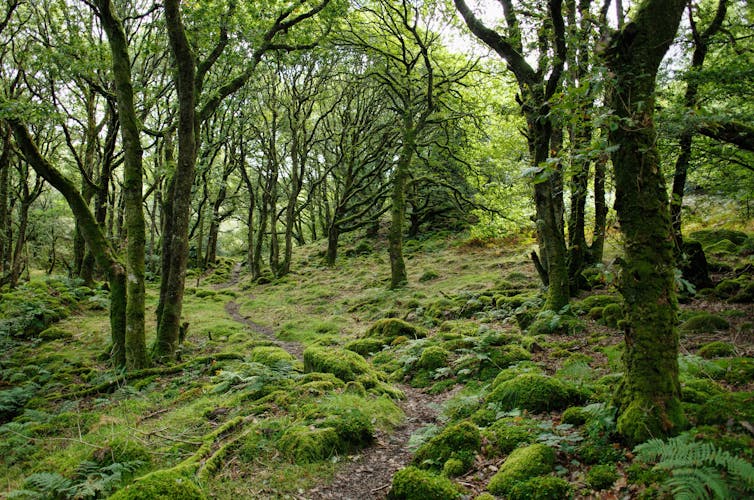
The world’s focus is sharply fixed on achieving net-zero emissions, yet surprisingly little thought has been given to what comes afterwards. In our new paper, published today in Nature Climate Change, we discuss the big unknowns in a post net-zero world.
It’s vital that we understand the consequences of our choices when it comes to greenhouse gas emissions and what comes next. The pathways we choose before and after reaching global net-zero emissions might mean the difference between a planet that remains habitable and one where many parts become inhospitable.
At the moment, human activities have a warming effect on the planet. But achieving our climate policy goals would take humanity into the uncharted territory of being able to cool the planet.
Being able to cool the planet raises a number of questions. Principally, how fast would we want the planet to cool, and what global average temperature should we aim for?
How Are Our Emissions Changing?
Our collective greenhouse gas emissions have warmed the planet about 1.2℃, relative to pre-industrial temperatures. In fact, despite all the talk about reducing emissions, global carbon dioxide emissions are at near-record levels.
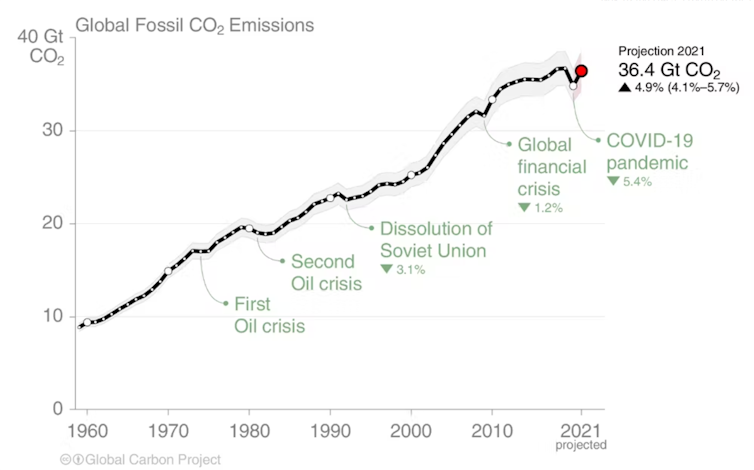
Some countries have successfully reduced their greenhouse gas emissions in recent years, such as the United Kingdom which has halved greenhouse gas emissions relative to 1990.
There is also greater push from major emitters such as the United States and the European Union – as well as countries that emit less but already experience climate change impacts – to take stronger steps to limit the damage we are doing to the climate.
Reducing greenhouse gas emissions and reaching net-zero are humanity’s greatest challenges. As long as greenhouse gas emissions remain substantially above net-zero we will continue to warm the planet.
To be in line with the Paris Agreement goal of limiting global warming to well below 2℃ above pre-industrial levels this century, we need to drastically reduce our emissions.
We also need to increase our uptake of carbon from the atmosphere through developing and implementing drawdown technology.
What Will Come After Net-Zero?
Net-zero emissions will be reached when humanity’s greenhouse gas emissions into the atmosphere are balanced by their removal from the atmosphere. We would likely need to reach global net-zero well within the next 50 years to keep global warming well below 2℃.
If we achieve this, we could continue the process of decarbonisation to reach net-negative greenhouse gas emissions – where more of humanity’s greenhouse gas emissions are removed from the atmosphere than released into it.
This would need to be achieved through a combination of “negative emissions” technologies, likely including some not invented yet, and land use changes such as reforestation.
Continued net-negative emissions will cause the planet to cool as greenhouse gas concentrations in the atmosphere fall. This is because the greenhouse effect, where gases such as carbon dioxide absorb radiation from Earth and warm the atmosphere, would weaken.
Currently, there’s almost no focus from governments, or indeed scientists, on the consequences of meeting our policy goals and going beyond net-zero. But this would be a turning point as the world would begin to cool.
Land would cool faster than the ocean. Indeed, some people may experience substantial cooling over their lifetimes – an unfamiliar concept to grasp in our warming climate.
These changes would be accompanied by effects on weather extremes and impacts to weather and climate-sensitive industries. While there’s not much research on this yet, we could, for example, see shipping routes close up as ice regrows in polar regions.
In the long-term, the best target global temperature for the planet might be something akin to a pre-industrial climate, with the human effect on Earth’s climate receding.
In our paper we call for a new set of climate model experiments that allow us to understand the range of possible future climates after net-zero.
Any decisions must be informed by an understanding of the consequences of different choices for a post net-zero climate. For example, competing interests between countries and industries may make global agreements more challenging in a post net-zero world.

Why Does This Matter Now?
Reading this article, you may feel we’re getting ahead of ourselves. After all, as highlighted, global greenhouse gas emissions remain at near-record highs.
A key factor that will affect the behaviour of the climate system after net-zero emissions would be the maximum level of global warming that we peak at. This is dictated by our current and near-future emissions.
If we fail to meet the Paris Agreement and peak global warming reaches 2℃ or more, then future generations will endure the effects of higher sea levels and other possible disastrous climate changes for many centuries to come.
Our understanding of post net-zero impacts of different peak levels of global warming is extremely limited.
Reducing greenhouse gas emissions through decarbonisation remains our key priority. The more we can suppress global warming by reaching net-zero emissions as early as possible, the more we limit potential disastrous effects and the need to cool the planet in a post net-zero world. ![]()
Andrew King, Senior Lecturer in Climate Science, The University of Melbourne; Celia McMichael, Senior Lecturer in Geography, The University of Melbourne; Harry McClelland, Lecturer in Geomicrobiology, The University of Melbourne; Jacqueline Peel, Director, Melbourne Climate Futures, The University of Melbourne; Kale Sniderman, Senior Research Fellow, The University of Melbourne; Kathryn Bowen, Professor - Environment, Climate and Global Health at Melbourne Climate Futures and Melbourne School of Population and Global Health, University of Melbourne, The University of Melbourne; Tilo Ziehn, Principal Research Scientist, CSIRO, and Zebedee Nicholls, Research Fellow at The International Institute for Applied Systems Analysis (IIASA) and Melbourne Climate Futures, The University of Melbourne
This article is republished from The Conversation under a Creative Commons license. Read the original article.
These unusual moths migrate over thousands of kilometres. We tracked them to reveal their secret navigational skills
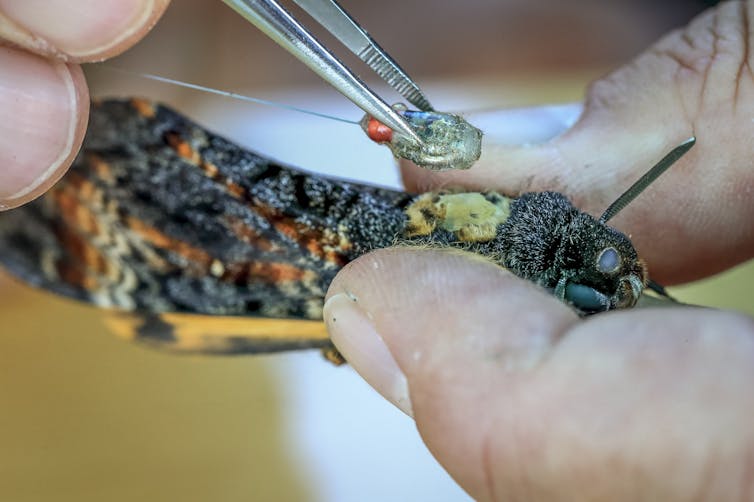
Migratory insects number in the trillions. They’re a major part of global ecosystems, helping to transport nutrients and pollen across continents – and often travelling thousands of kilometres in the process.
It had long been thought migrating insects largely go wherever the wind blows. But there’s mounting evidence they’re actually great navigators and can select favourable conditions to undertake their journeys.
One outstanding question for experts has been how they react to varying wind conditions while en route. In research published today in Science, we show one migratory insect species, the death’s-head hawkmoth, can maintain a perfectly straight flight path. These moths are able to adjust their trajectory to compensate for rough wind conditions.
Tiny Transmitters
Much of our knowledge of insect migration comes from direct observations. These include observations made using radar, or studies of population processes, such as using genetic methods, or measuring ratios of isotopes in tissues (which can reveal insects’ food and water sources and provide information on where they come from).
How individual insects behave, and the paths they take, during migration has been relatively difficult to study, mostly due to their small size and the sheer number of them. But recent advances in tracking technology have helped produce transmitters small enough to be carried by larger insects.
These transmitters weigh less than a gram and can be attached to individual insects. This allows us to track them directly as they migrate and learn what this process involves.
Migratory Moths
Our study focused on the death’s-head hawkmoth (Acherontia atropos), an enigmatic moth found in Europe and Africa. The species is well known for the unusual skull-like marking on its thorax. When disturbed, it also has the habit of squeaking and flashing its bright-yellow abdomen.
The moth feeds on honey it steals from honeybee hives, entering the hive and piercing the honeycomb with its stout proboscis (its feeding tube).
While we know this species occurs in Europe, little is understood about its migratory behaviour and where it spends the winter. Adult moths tend to appear in Europe during spring (May to June), and the next generation of adults sets out in autumn (August to October) – likely making its way to the Mediterranean or North Africa, and perhaps as far as south of the Sahara.
It’s thought the species is unable to spend winter north of the Alps, so its migration is probably driven by low temperature and resource availability.
Tracking In The Dark
For our research, we tracked 14 moths for up to four hours each – a stretch of time long enough to be considered migratory flight.
We fitted each individual with a tiny radio transmitter, weighing less than 0.3g, before releasing them. A Cessna aeroplane with receiving antennas flew after them as they migrated, detecting their precise location every five to 15 minutes. This method gave us in-depth insight into their flight behaviour.
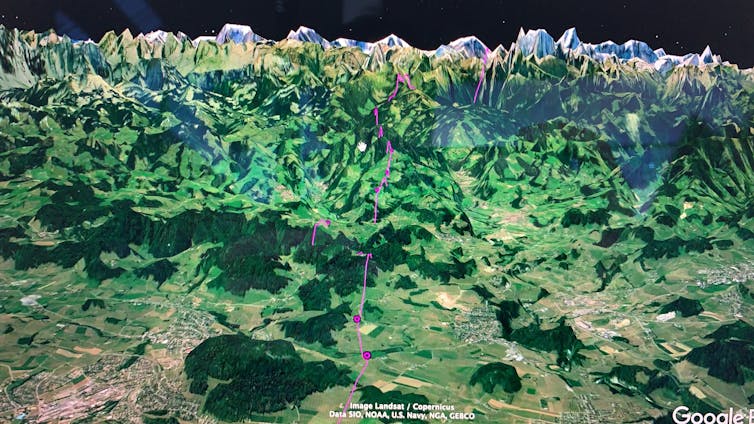
Radio tracking has successfully been used to investigate the migration of some day-flying insects, such as the monarch butterfly (Danaus plexippus) and green darner dragonfly (Anax junius). However, it has never been used on nocturnal insects in the wild, or at this resolution.
In fact, our research marks the longest distance any insect has ever been continuously tracked in the field.
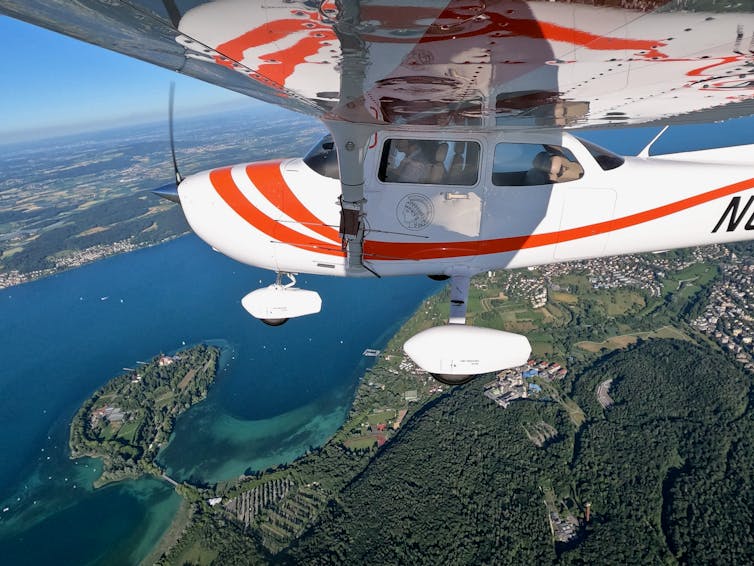
Making A Bee-Line
So what do moths do on migration? To our surprise, we found they flew along very straight paths, effectively making a bee-line for their destination. Some of the longest tracks reached nearly 90km over a period of four hours. This is a fascinating finding as such straight tracks are very uncommon in long-range migratory animals.
The moths also showed distinct strategies to deal with different wind conditions. When there were favourable tailwinds (winds going in the same direction as them) they flew downwind and were propelled towards their destination, or offset their heading slightly to maintain control of their trajectory.
In unfavourable conditions, such as headwinds (coming from the front) and crosswinds (from the side), the moths flew low to the ground and directly into the headwinds, adjusting their trajectory to avoid drifting off course. They also increased their speed to stay in control.
This remarkable ability to stay on course, even in unfavourable conditions, indicates the death’s-head hawkmoth has sophisticated compass mechanisms.
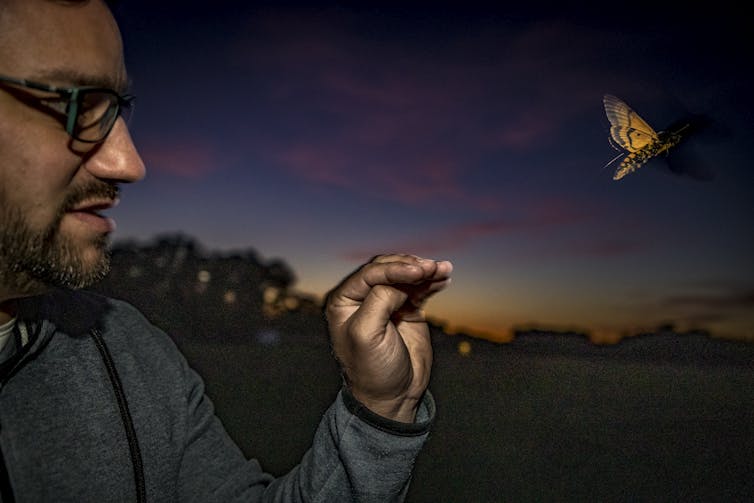
Where To Next?
We’ve shown insects are capable of being expert navigators, on par with birds, and aren’t at the whim of the winds as we once thought. This is an important discovery in migration science.
That said, there’s still a huge amount we don’t know about how insects migrate and where they go. The next step will be to understand exactly what mechanisms these moths use to stay on their path. For instance, are they following the Earth’s magnetic field? Or perhaps relying heavily on visual cues?
The more we understand, the closer we can get to being able to predict the phenomena of insect migration. And this would have broad implications – from managing threatened species and species with agricultural benefits, to having better control over agricultural pests. ![]()
Myles Menz, Lecturer, Zoology and Ecology, James Cook University and Martin Wikelski, , Max Planck Institute of Animal Behavior
This article is republished from The Conversation under a Creative Commons license. Read the original article.
Thousands more species at risk of extinction than currently recorded, suggests new study

New research suggests the extinction crisis may be even worse than we thought. More than half of species that have so far evaded any official conservation assessment are threatened with extinction, according to predictions by researchers from the Norwegian University of Science and Technology.
Conservation resources are limited and it is not feasible or logical to protect every square kilometre of land and sea. So to mitigate the rapid loss of biodiversity, where should our conservation resources go? To answer this question we first need to know which species to protect.
The International Union for Conservation of Nature coordinates a network of scientists who have assessed biological information available for all sorts of species worldwide for more than 50 years, publishing their findings in the Red List of Threatened Species. Its goal has been to identify species that need protection with an assigned conservation category of extinction risk.
It’s the Red List that confirmed tigers are officially endangered, for instance, or that giant panda populations have recovered enough to move from endangered to merely vulnerable.
However, while species like pandas and tigers are well studied, researchers don’t know enough about some species to properly assess their conservation status. These “data deficient” species make up around 17% of the nearly 150,000 species currently assessed.
When analysing conservation data it is common for researchers to remove or underestimate assumptions of threat for these species, in order to control for unknown variations or misjudgements. Now, these researchers in Norway have tried to shed light on the black hole of unknown extinction risk by designing a machine learning model that predicts the threat of extinction for these data deficient species.
Machine Learning For Extinction Assessment
When thinking of artificial intelligence and machine learning it is easy to imagine robots, computer-simulations and facial recognition. In reality, at least in ecological science, machine learning is simply an analytical tool used to run thousands of calculations to best represent the real-world data we have.
In this case, the Norwegian researchers simplified the Red List extinction categories into a “binary classifier” model to predict a probability of whether data deficient species are likely “threatened” or “not threatened” by extinction. The model algorithm has “learned” from mathematical patterns found in biological and bioclimatic data of those species with an already assigned conservation category on the Red List.

They found more than half (56%) of the data deficient species are predicted to be threatened, which is double the 28% of total species currently evaluated as threatened in Red List. This reinforces the concern that data deficient species are not only under-researched, but are at risk of being lost forever.
On land, these likely threatened terrestrial species are found across all continents, but live in small geographically restricted areas. This finding supports previous research with similar conclusions that species with small range sizes are particularly vulnerable to anthropogenic habitat degradation, such as deforestation or urbanisation.
At Risk Amphibians
Amphibians are the most at-risk group, with 85% of those data deficient species predicted as threatened (compared to 41% of those currently evaluated on the Red List). Amphibians are already a poster-child for the extinction crisis and are a key indicator for ecological health, as they depend on both land and water. We don’t know enough about what causes such catastrophic extinction of amphibians, and I am part of a science initiative trying to address the problem.
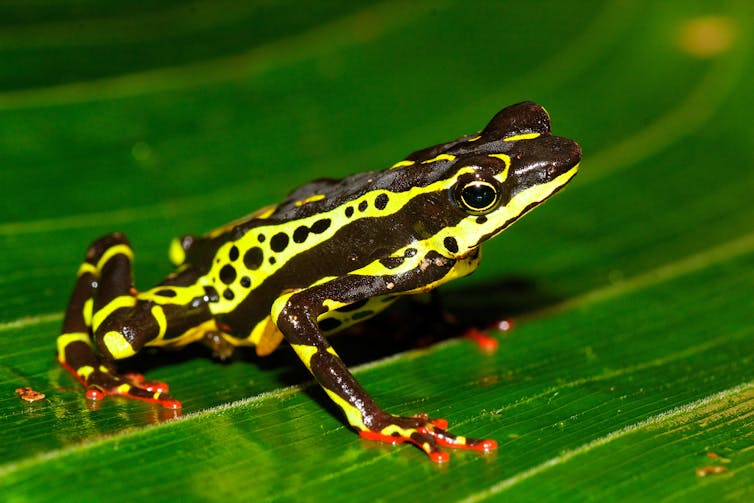
It’s a slightly different, but still tragic, story at sea. Data deficient marine species that are predicted to be facing extinction are concentrated along coasts, particularly in south-eastern Asia, the eastern Atlantic coastline and in the Mediterranean. When data deficient species are combined with fully-assessed species on the Red List, there is a 20% increase in the probability of extinction along the eastern coastlines of tropical Latin America.
What This Means For Global Conservation
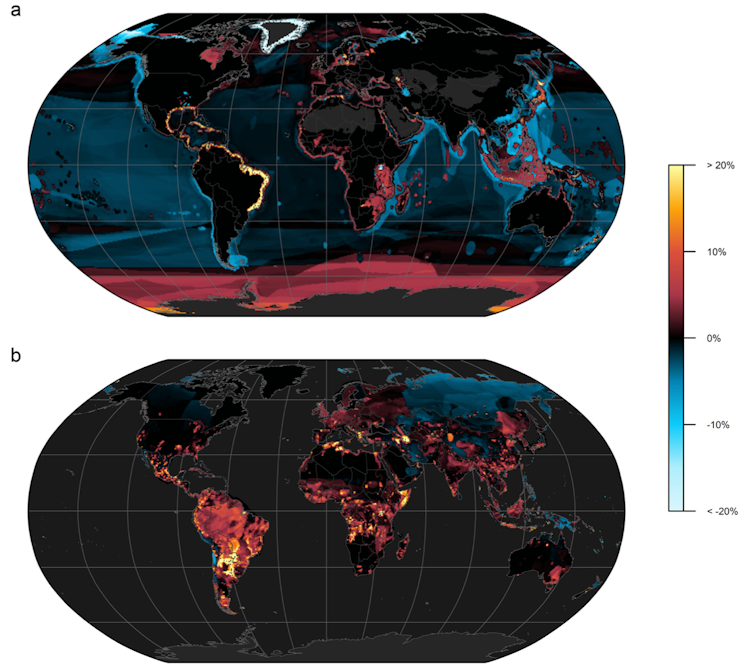
Though it is likely that the need for conservation has actually been underestimated worldwide these probability predictions are highly variable across different areas and groups of species, so don’t be fooled into overgeneralising these findings. But these broad results do highlight why it is so important to further investigate data deficient species.
The use of machine learning tools can be a time-and-cost-effective way to enhance the Red List and help overcome the challenging decision of where and what to protect, aiding targeted conservation action and expanding protected areas in these black holes of biodiversity.![]()
Lilly P. Harvey, PhD Researcher, Environmental Science, Nottingham Trent University
This article is republished from The Conversation under a Creative Commons license. Read the original article.
How centuries of self-isolation turned Japan into one of the most sustainable societies on Earth

At the start of the 1600s, Japan’s rulers feared that Christianity – which had recently been introduced to the southern parts of the country by European missionaries – would spread. In response, they effectively sealed the islands off from the outside world in 1603, with Japanese people not allowed to leave and very few foreigners allowed in. This became known as Japan’s Edo period, and the borders remained closed for almost three centuries until 1868.
This allowed the country’s unique culture, customs and ways of life to flourish in isolation, much of which was recorded in art forms that remain alive today such as haiku poetry or kabuki theatre. It also meant that Japanese people, living under a system of heavy trade restrictions, had to rely totally on the materials already present within the country which created a thriving economy of reuse and recycling). In fact, Japan was self-sufficient in resources, energy and food and sustained a population of up to 30 million, all without the use of fossil fuels or chemical fertilisers.
The people of the Edo period lived according to what is now known as the “slow life”, a sustainable set of lifestyle practices based around wasting as little as possible. Even light didn’t go to waste – daily activities started at sunrise and ended at sunset.
Clothes were mended and reused many times until they ended up as tattered rags. Human ashes and excrement were reused as fertiliser, leading to a thriving business for traders who went door to door collecting these precious substances to sell on to farmers. We could call this an early circular economy.

Another characteristic of the slow life was its use of seasonal time, meaning that ways of measuring time shifted along with the seasons. In pre-modern China and Japan, the 12 zodiac signs (known in Japanese as juni-shiki) were used to divide the day into 12 sections of about two hours each. The length of these sections varied depending on changing sunrise and sunset times.
During the Edo period, a similar system was used to divide the time between sunrise and sunset into six parts. As a result, an “hour” differed hugely depending on whether it was measured during summer, winter, night or day. The idea of regulating life by unchanging time units like minutes and seconds simply didn’t exist.
Instead, Edo people – who wouldn’t have owned clocks – judged time by the sound of bells installed in castles and temples. Allowing the natural world to dictate life in this way gave rise to a sensitivity to the seasons and their abundant natural riches, helping to develop an environmentally friendly set of cultural values.
Working With Nature
From the mid-Edo period onwards, rural industries – including cotton cloth and oil production, silkworm farming, paper-making and sake and miso paste production – began to flourish. People held seasonal festivals with a rich and diverse range of local foods, wishing for fertility during cherry blossom season and commemorating the harvests of the autumn.
This unique, eco-friendly social system came about partly due to necessity, but also due to the profound cultural experience of living in close harmony with nature. This needs to be recaptured in the modern age in order to achieve a more sustainable culture – and there are some modern-day activities that can help.
For instance zazen, or “sitting meditation”, is a practice from Buddhism that can help people carve out a space of peace and quiet to experience the sensations of nature. These days, a number of urban temples offer zazen sessions.

The second example is “forest bathing”, a term coined by the director general of Japan’s forestry agency in 1982. There are many different styles of forest bathing, but the most popular form involves spending screen-free time immersed in the peace of a forest environment. Activities like these can help develop an appreciation for the rhythms of nature that can in turn lead us towards a more sustainable lifestyle – one which residents of Edo Japan might appreciate.
In an age when the need for more sustainable lifestyles has become a global issue, we should respect the wisdom of the Edo people who lived with time as it changed with the seasons, who cherished materials and used the wisdom of reuse as a matter of course, and who realised a recycling-oriented lifestyle for many years. Learning from their way of life could provide us with effective guidelines for the future.![]()
Hiroko Oe, Principal Academic, Bournemouth University
This article is republished from The Conversation under a Creative Commons license. Read the original article.
The world’s biggest ice sheet is more vulnerable to global warming than scientists previously thought
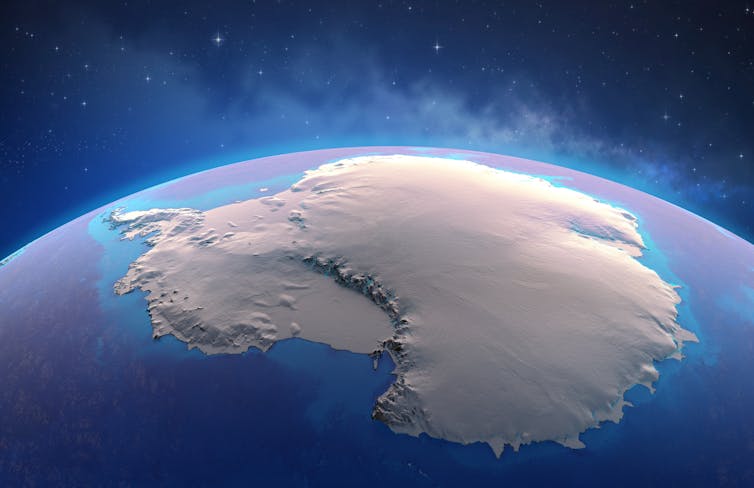
The eastern two thirds of Antarctica is covered by an ice sheet so large that if it melted the sea would rise by 52 metres. Most scientists had once thought this ice sheet was largely invulnerable to climate change, but not any more. And our new research, published in Nature, reveals the dire consequences if we were to awaken Antarctica’s sleeping giant.
Almost 70% of the Earth’s fresh water is frozen in vast continental ice sheets that cover Greenland and Antarctica. Together, they store the equivalent of around 65 metres of sea level rise. Hence, even relatively small changes in the volume of these remote polar ice sheets will have a global impact. An estimated 1 billion people live within 10 metres of sea level, including 230 million within 1 metre.
Scientists measure changes in the volume of these ice sheets by estimating the mass input, mostly via snowfall, and the mass output, mostly melting snow and ice along with icebergs that break off and float away. The difference between input and output is known as the ice sheet’s “mass balance”, which is highly sensitive to climate change.
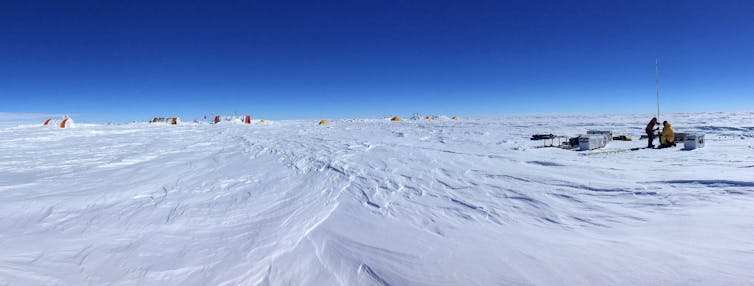
The most recent efforts to measure ice sheet mass balance paint a very worrying picture. The Greenland Ice Sheet, which contains around 7.4 metres of sea level rise, lost 3,900 billion tonnes of ice between 1992 and 2018, causing global sea level to increase by 11 millimetres over this period. A similar story emerges from the western part of Antarctica, known as the West Antarctic Ice Sheet. It holds around 5.3 metres of sea level and lost more than 2,000 billion tonnes of ice between 1992 and 2017, adding around 6 mm to the sea level.

More Sensitive Than We Thought
Perhaps surprisingly, much less work has focused on the East Antarctic Ice Sheet, which is by far the world’s largest but was thought to be a lot less vulnerable to global warming. This is because large parts of the ice sheet have persisted through “natural” climate changes across millions of years, and because recent measurements indicate that it has been in equilibrium or has maybe even gained mass (a warmer atmosphere can hold more moisture, which means more snow). In fact, the ice sheet may have even slightly reduced sea level rise over the past century.
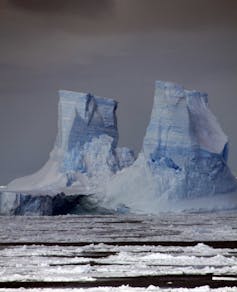
However, over the past two decades or so, observations suggest that the East Antarctic Ice Sheet may be far more sensitive to climate warming than previously thought. Major outlet glaciers like the Totten and Vanderford are thinning and retreating. And there are clear signals of mass loss in Wilkes Land, the ice sheet’s “weak underbelly”, so-called because it rests on “land” that lies well below sea-level and so is particularly unstable.
Lessons From The Past
There is also evidence that parts of East Antarctica retreated quite dramatically during warm periods in the past, when carbon dioxide concentrations and atmospheric temperatures were only slightly higher than present.
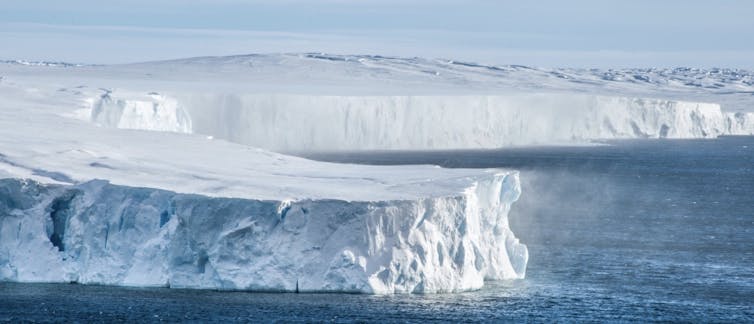
It is likely that East Antarctica contributed several metres to global sea level during the mid-Pliocene warm period, around 3 million years ago, with ice loss concentrated in Wilkes Land. Recent work has also suggested that ice in Wilkes Land retreated 700 km inland from its present position around 400,000 years ago, when global temperatures were only 1 or 2℃ higher than present. A key lesson from the past, therefore, is that the East Antarctic Ice Sheet is highly sensitive to relatively modest warming, even if it is currently stable.
Don’t Wake A Sleeping Giant
So what will actually happen over the next few decades and centuries? We recently analysed projections from various computer simulations to answer this question. Our results were alarming, but also offered some encouragement.
We found the ice sheet will probably remain broadly in balance in the short-term, because any mass loss due to global warming will be offset by increased snowfall. Although there are large uncertainties, we concluded that the ice sheet will only raise the sea level by about 2cm by the year 2100, which is much less than the contribution projected from melting ice in Greenland or West Antarctica.
Over the next few centuries, however, the sea-level contribution from East Antarctica will depend critically on whether we manage to curb our emissions. If warming continues beyond 2100, sustained by high emissions, then East Antarctica could contribute around 1 to 3 metres by 2300 and around 2 to 5 metres by 2500, adding to the substantial contributions from Greenland and West Antarctica and threatening millions of people who inhabit coastal areas.
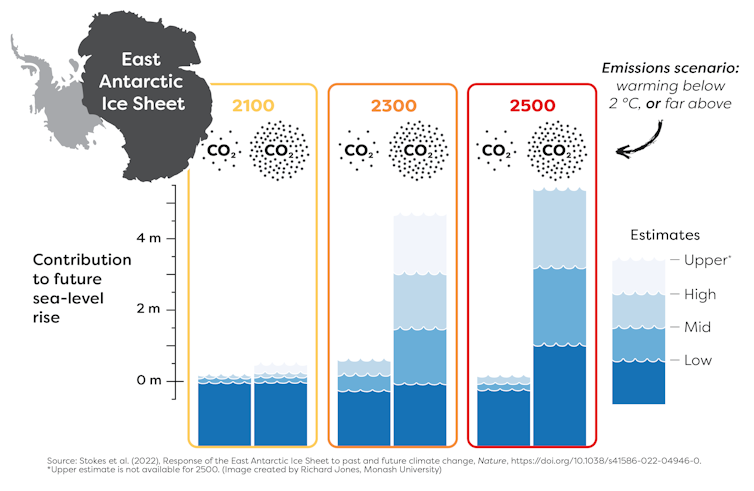
Crucially, however, our analysis suggests that if the Paris Agreement to limit warming to well below 2℃ is satisfied, then East Antarctica’s sea-level contribution would remain below 0.5 metres, even five centuries from now.
The fate of the world’s largest ice sheet remains in our hands.![]()
Chris Stokes, Professor in the Department of Geography, Durham University and Guy Paxman, Assistant Professor (Research), Department of Geography, Durham University
This article is republished from The Conversation under a Creative Commons license. Read the original article.
Ice shelves hold back Antarctica’s glaciers from adding to sea levels – but they’re crumbling
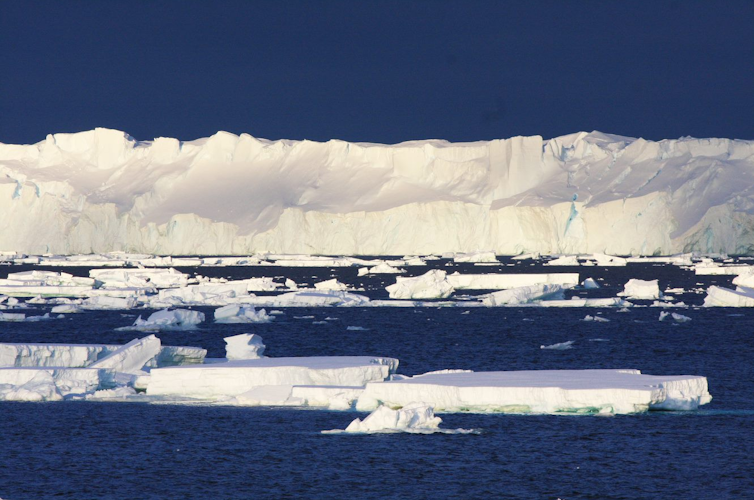
As Antarctica’s slow rivers of ice hit the sea, they float, forming ice shelves. These shelves extend the glaciers into the ocean until they calve into icebergs.
But they also play a crucial role in maintaining the world as we know it, by acting as a brake on how fast the glaciers can flow into the ocean. If they weren’t there, the glaciers would flow faster into the sea and melt, causing sea levels to rise.
Unfortunately, Antarctica’s ice shelves are not what they were. In research published today in Nature, we show these ice shelves have significantly reduced in area over the last 25 years due to more and more icebergs breaking off. Overall, the net loss of ice is about 6,000 billion tonnes since 1997.
Previous estimates of ice shelf loss come from satellite measurements, which captured ice shelves gradually thinning in recent years. We tracked how much extra ice had been lost as icebergs calve away from the retreating edge of the continent. We found Antarctica’s ice shelves have lost twice as much mass as previous studies suggested.
Ice shelves are now weaker than at any time since at least the 1990s. This has led Antarctica’s glaciers to begin adding more water to the oceans, and more quickly. To date, much of the concern about the cryosphere – the world’s frozen parts – has focused on the fast-melting Arctic sea ice. But as climate change intensifies, Antarctica will begin melting in earnest, contributing more to sea level rise.
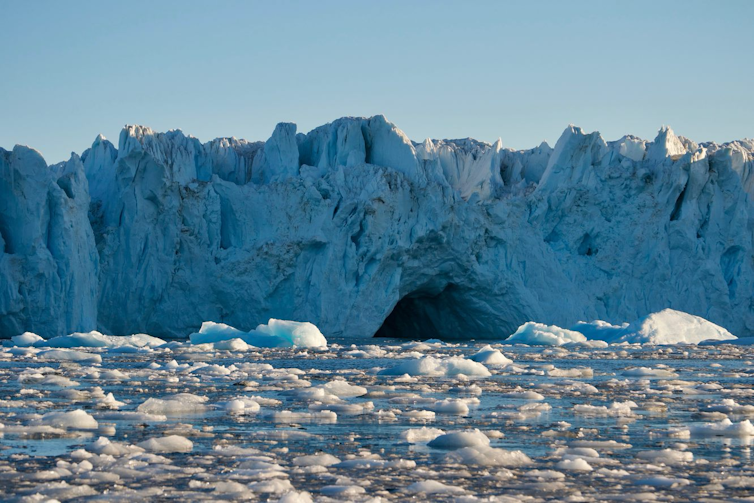
What We Measured
We built numerical models to figure out what ice shelf thinning and loss of area mean for the ability of ice shelves to resist new ice being pushed in from upstream glaciers.
Our work shows the drop in ice shelf area has led to more ice flowing into the sea since 2007, as calving has weakened ice shelves and allowed some of the world’s largest glaciers to accelerate.
We found the Pine Island Glacier and the so-called “Doomsday” Thwaites Glacier – which could destabilise the entire West Antarctic ice sheet if it melts – are highly sensitive to calving, and are already increasing their contribution to sea level rise as their protective ice shelves crumbled.
Iceberg calving is a natural process. In any climate, we expect to see massive flat-top icebergs periodically break off and float away. So while no single calving event should be taken as cause for alarm, the long term trend is concerning. We found a majority of Antarctica’s ice shelves have lost mass since the late 1990s.
Why are Antarctic ice shelves shrinking? There’s no single answer. Some ice shelves such as the Wilkins Ice Shelf have already seen catastrophic disintegration, while others are retreating slowly and some are even advancing. But overall, these ice shelves are shrinking.
We know one cause of ice shelf retreat is the thinning of ice shelves, which is largely caused by relatively warm seawater eroding the base of these shelves.
We also know iceberg calving increases whenever Antarctica’s protective ring of sea ice weakens. This year, Antarctica saw the lowest sea ice extent ever recorded since measurements began in the 1970s. We’ve also seen entire ice shelves collapse when warmer air temperatures create surface meltwater that can cut through hundreds of metres of ice shelf.
Four Giant Ice Shelves Are Still In Good Shape
Antarctica’s four largest ice shelves are the Ross, Ronne, Filchner, and Amery. These vast floating sheets of ice tend to calve off giant icebergs once every few decades.
All four are on track for major calving events in the next 10 to 15 years, and none would normally be cause for alarm. The problem is calving will come on top of steady ice shelf loss. When the major ice shelves do calve off huge icebergs, they will leave the Antarctic Ice Sheet smaller than we’ve ever seen it.
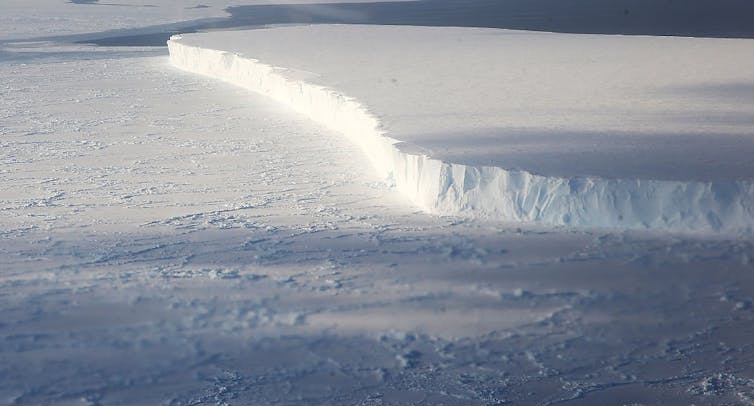
But while we’re not yet seeing any abnormal behaviour in these four major ice shelves, the overlooked losses from all the smaller ice shelves fringing the continent are adding up. Earlier this year, one smaller ice shelf collapsed entirely.
The most troubling changes of the past few decades are less photogenic than sudden ice shelf collapse. Bit-by-bit, West Antarctica’s Thwaites ice shelf has retreated.
Each calving event has left the ice shelf weaker and allowed the Thwaites Glacier behind it – the size of the state of Victoria – to flow faster into the ocean. While the Thwaites ice shelf is relatively small, it is vital. Until now, it has acted like a plug. If it keeps retreating, it could potentially destabilise the entire West Antarctic ice sheet and unlock several metres of sea level rise.
Climate Change Is The Big Picture
Our warming atmosphere and ocean are the root cause. Given the long lag time between greenhouse gases trapping heat and actual warming, it stands to reason that what we’re seeing in Antarctica right now is at least partly a response to warming gases dumped into the atmosphere decades or even a century ago. That means we’re already locked into more ice shelf retreat, as emissions have continued rising.
Antarctica holds around 30 million cubic kilometres of ice, a truly enormous figure. That represents around 90% of the world’s surface fresh water. If it all melted, seas would rise almost 60 metres. Humanity’s decisions will shape what Antarctica will look like in decades to come, and how much ice will remain.![]()
Alexander Fraser, Senior Researcher in Antarctic Remote Sensing, University of Tasmania and Chad Greene, Scientist at NASA's Jet Propulsion Laboratory, California Institute of Technology
This article is republished from The Conversation under a Creative Commons license. Read the original article.
The US has finally passed a huge climate bill. Australia needs to keep up

If politics moves slowly, climate politics often feels like it doesn’t move at all.
Yet at the weekend, US senators worked through the night to accomplish something they have failed to do since NASA scientist James Hansen first warned them about the dangers of climate change almost 35 years ago. They passed a major climate bill.
And not just any bill. The A$530 billion of clean energy initiatives in the larger Inflation Reduction Act represent the largest single investment to slow global heating in US history. It means the world’s second-largest emitter of greenhouse gases will become a global leader on climate change.
Initial modelling suggests the bill could be enough to cut US emissions by around 40% by 2030, relative to a 2005 baseline. That won’t meet President Joe Biden’s goal of halving emissions by 2030, but it gives America a fighting chance.
What does it mean for Australia? After the go-slow years of Coalition government and Trump’s fossil-fuel-friendly presidency, the times finally favour action. There is a clean energy race on, and Australia needs to keep up.
It’s Been A Hard Road
When the bill passed, senators broke down in tears. Senate majority leader Chuck Schumer spoke of “a long, tough and winding road. But at last, at last we have arrived.”
The bill looked dead in the water as recently as July, when controversial Democratic senator Joe Manchin of West Virginia pulled his crucial vote for climate legislation.
That led many to despair, believing the window for climate action had shut again given Republican disinterest in climate action. But then Manchin cut a deal. It was the last chance to act before November’s midterm elections, which Republicans are expected to win – although the Supreme Court’s seismic decision on abortion may change this.
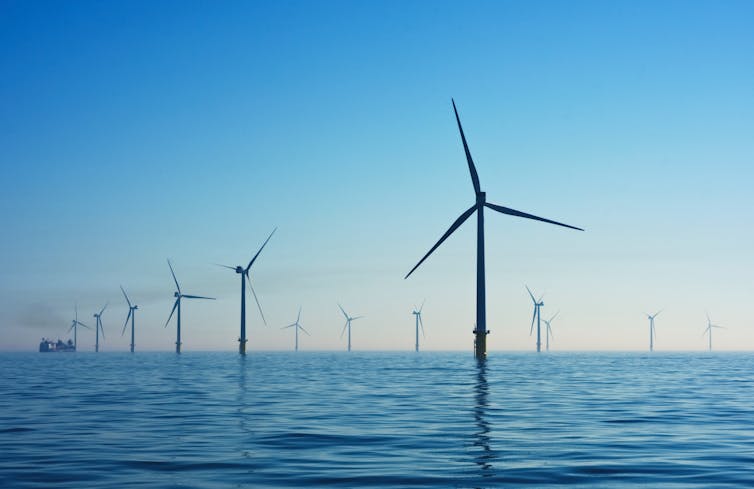
I remember being in Washington DC, studying climate policy, the last time the US got this close. In the summer of 2009, the US House of Representatives passed a bill designed to institute a nationwide carbon price. With chants of “yes we can” still ringing in many ears after President Barack Obama’s arrival in the White House, it seemed climate politics was moving. But the Senate killed that bill, and with it any hope for legislative action on climate change.
America had to wait more than a decade for the next opportunity. The weekend’s vote was close, with Vice President Kamala Harris casting the decider.
What was lost in the intervening years was more than time. In the past decade, climate impacts have become more frequent and deadly. Just ask the flood victims of Lismore in New South Wales, or the citizens of Mallacoota in Victoria after the bushfires.
Most of Europe is now in drought. Stories of unprecedented heatwaves and flooding come in weekly from China, India, the Middle East and South America. The western US is in megadrought, the worst in at least 1,200 years, with reservoirs at dangerous lows.
What Does The Bill Actually Contain?
When climate action is deliberately stalled by political parties, the price is paid by communities, families and the natural world.
That’s why the US bill is momentous. Senate approval of the A$530 billion in spending will directly advance clean energy. This includes billions of dollars in tax credits for solar panels, wind turbines, batteries and geothermal plants, among other technologies.
This comes through around A$13 billion in rebates for Americans to electrify their homes, tax credits of almost A$11,000 to electrify their cars, and billions more to establish a “green bank”, target agricultural emissions and help disadvantaged communities.
Even better, these billions in public money will crowd in private investment, accelerating the speed at which the US economy can decarbonise.
What Should Australia Take From This?
There are several lessons for Australia.
The first is legislating a target as Labor has done is a start, but only a start. The world is set for a clean energy race, given China is also investing huge amounts in clean energy while European nations are trying to wean themselves off Russian gas.
The Albanese government should follow the US with historic investments in clean energy, using renewable jobs as an incentive. Key features of the US bill aim to turbocharge local clean energy manufacturing, such as requiring battery components be made in the US. As it stands, America’s geopolitical rival China has cornered the market in many areas of clean tech, such as solar panels.
Second, fossil fuel industries will fight tooth and nail against change. Manchin has received more money from the oil and gas industry than any other member of Congress – and has personal interests in coal. His interventions mean the bill has rewards for the oil and gas industries, such as requiring the federal government to auction new offshore oil and gas leases. There is likely more devil in the detail.
For decades, fossil fuel industries have had an outsized influence on climate policy in Australia. It’s folly to think they’ll just give up. This week we found out the car industry has already launched a secret PR campaign to slow electric vehicle uptake.
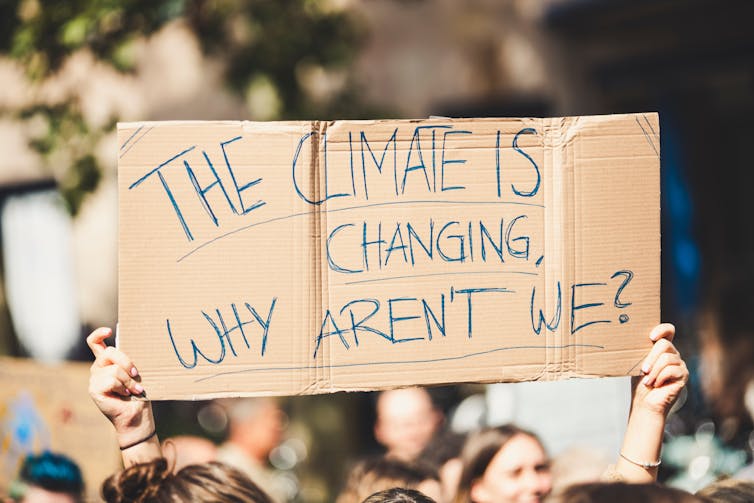
Against these entrenched interests stand the growing throngs of people involved in climate movements. This is what has kept climate politics moving. Countless Americans, from political activists to schoolkids, mobilised to pressure Congress to act.
The same has happened here. Arid and sparsely populated Australia is already being hit by intensifying natural disasters. As the May election result showed, people have had enough of political delays and inaction.
We must keep moving. Climate science does not stand still, and neither should the politics.![]()
Christian Downie, Associate Professor, Australian National University
This article is republished from The Conversation under a Creative Commons license. Read the original article.
Backyard hens’ eggs contain 40 times more lead on average than shop eggs, research finds
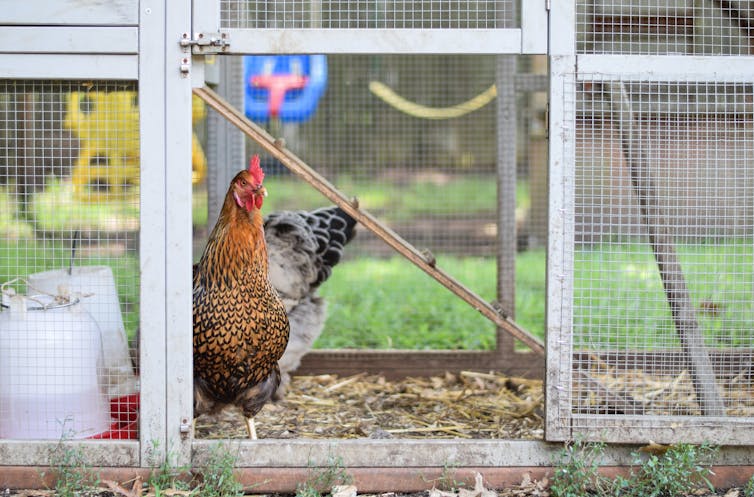
There’s nothing like the fresh eggs from your own hens, the more than 400,000 Australians who keep backyard chooks will tell you. Unfortunately, it’s often not just freshness and flavour that set their eggs apart from those in the shops.
Our newly published research found backyard hens’ eggs contain, on average, more than 40 times the lead levels of commercially produced eggs. Almost one in two hens in our Sydney study had significant lead levels in their blood. Similarly, about half the eggs analysed contained lead at levels that may pose a health concern for consumers.
Even low levels of lead exposure are considered harmful to human health, including among other effects cardiovascular disease and decreased IQ and kidney function. Indeed, the World Health Organization has stated there is no safe level of lead exposure.
So how do you know whether this is a likely problem in the eggs you’re getting from backyard hens? It depends on lead levels in your soil, which vary across our cities. We mapped the areas of high and low risk for hens and their eggs in our biggest cities – Sydney, Melbourne and Brisbane – and present these maps here.
Our research details lead poisoning of backyard chickens and explains what this means for urban gardening and food production. In older homes close to city centres, contaminated soils can greatly increase people’s exposure to lead through eating eggs from backyard hens.
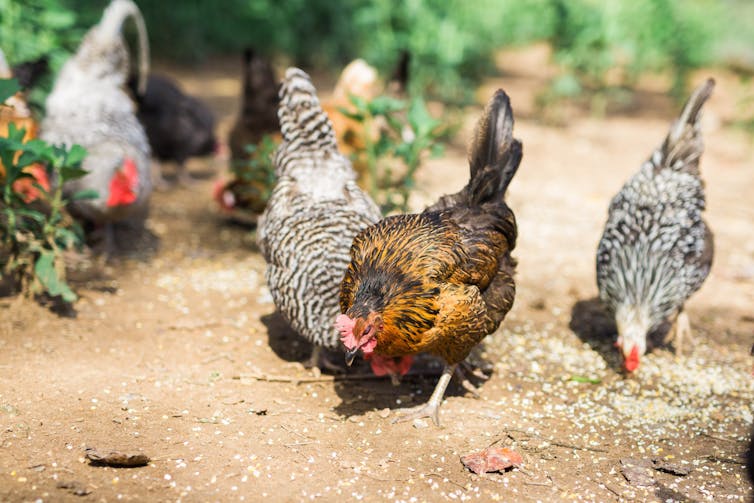
What Did The Study Find?
Most lead gets into the hens as they scratch in the dirt and peck food from the ground.
We assessed trace metal contamination in backyard chickens and their eggs from garden soils across 55 Sydney homes. We also explored other possible sources of contamination such as animal drinking water and chicken feed.
Our data confirmed what we had anticipated from our analysis of more than 25,000 garden samples from Australia gardens collected via the VegeSafe program. Lead is the contaminant of most concern.
The amount of lead in the soil was significantly associated with lead concentrations in chicken blood and eggs. We found potential contamination from drinking water and commercial feed supplies in some samples but it is not a significant source of exposure.
Unlike for humans, there are no guidelines for blood lead levels for chickens or other birds. Veterinary assessments and research indicate levels of 20 micrograms per decilitre (µg/dL) or more may harm their health. Our analysis of 69 backyard chickens across the 55 participants’ homes showed 45% had blood lead levels above 20µg/dL.
We analysed eggs from the same birds. There are no food standards for trace metals in eggs in Australia or globally. However, in the 19th Australian Total Diet Study, lead levels were less than 5µg/kg in a small sample of shop-bought eggs.
The average level of lead in eggs from the backyard chickens in our study was 301µg/kg. By comparison, it was 7.2µg/kg in the nine commercial free-range eggs we analysed.
International research indicates that eating one egg a day with a lead level of less than 100µg/kg would result in an estimated blood lead increase of less than 1μg/dL in children. That’s around the level found in Australian children not living in areas affected by lead mines or smelters. The level of concern used in Australia for investigating exposure sources is 5µg/dL.
Some 51% of the eggs we analysed exceeded the 100µg/kg “food safety” threshold. To keep egg lead below 100μg/kg, our modelling of the relationship between lead in soil, chickens and eggs showed soil lead needs to be under 117mg/kg. This is much lower than the Australian residential guideline for soils of 300mg/kg.
To protect chicken health and keep their blood lead below 20µg/kg, soil concentrations need to be under 166mg/kg. Again, this is much lower than the guideline.
How Did We Map The Risks Across Cities?
We used our garden soil trace metal database (more than 7,000 homes and 25,000 samples) to map the locations in Sydney, Brisbane and Melbourne most at risk from high lead values.

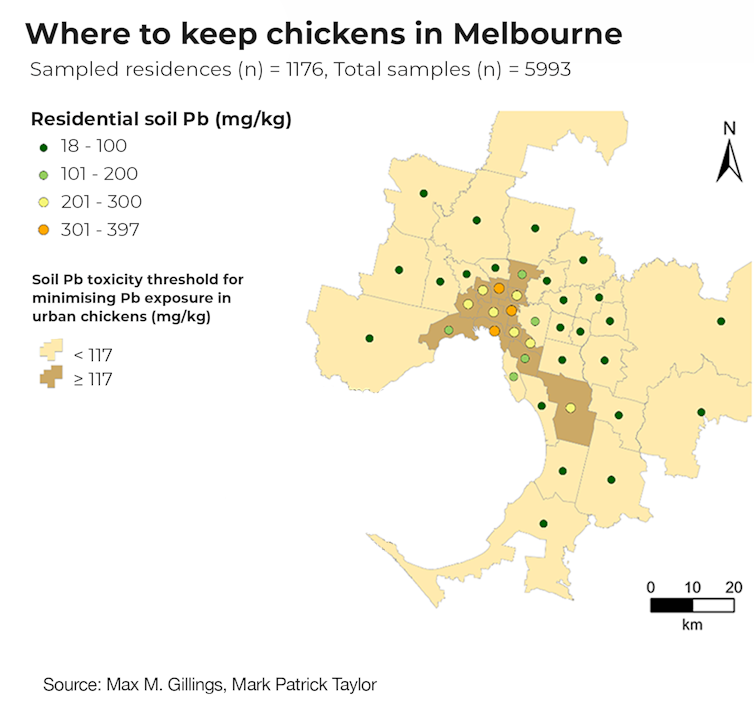
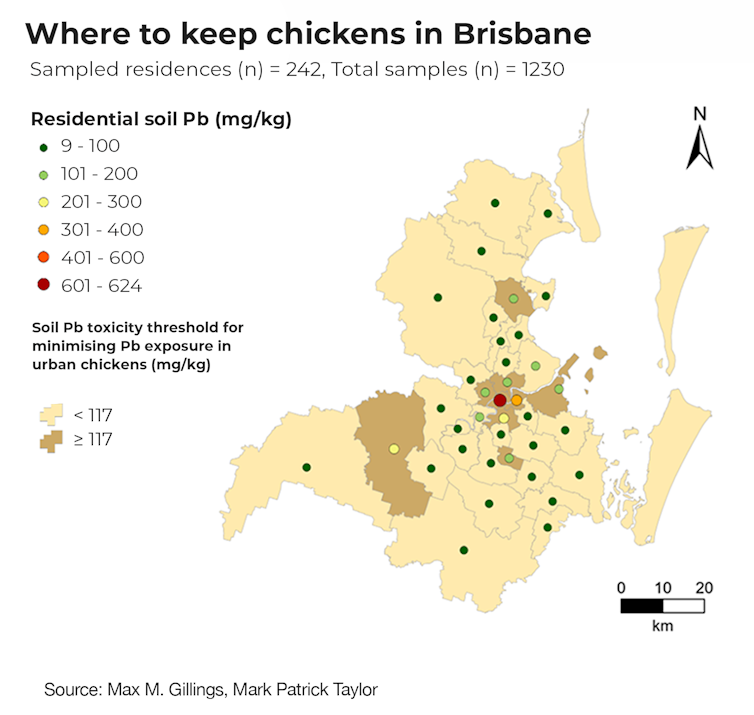
Deeper analysis of the data showed older homes were much more likely to have high lead levels across soils, chickens and their eggs. This finding matches other studies that found older homes are most at risk of legacy contamination from the former use of lead-based paints, leaded petrol and lead pipes.
What Can Backyard Producers Do About It?
These findings will come as a shock to many people who have turned to backyard food production. It has been on the rise over the past decade, spurred on recently by soaring grocery prices.
People are turning to home-grown produce for other reasons, too. They want to know where their food came from, enjoy the security of producing food with no added chemicals, and feel the closer connection to nature.
While urban gardening is a hugely important activity and should be encouraged, previous studies of contamination of Australian home garden soils and trace metal uptake into plants show it needs to be undertaken with caution.
Contaminants have built up in soils over the many years of our cities’ history. These legacy contaminants can enter our food chain via vegetables, honey bees and chickens.
Urban gardening exposure risks have typically focused on vegetables and fruits. Limited attention has been paid to backyard chickens. The challenge of sampling and finding participants meant many previous studies have been smaller and have not always analysed all possible exposure routes.
Mapping the risks of contamination in soils enables backyard gardeners and chicken keepers to consider what the findings may mean for them.
Particularly in older, inner-city locations, it would be prudent to get their soils tested. People can do this at VegeSafe or through a commercial laboratory. Soils identified as a problem can be replaced and chickens kept to areas of known clean soil.![]()
Mark Patrick Taylor, Chief Environmental Scientist, EPA Victoria; Honorary Professor, Macquarie University; Dorrit E. Jacob, Professor, Research School of Earth Sciences, Australian National University, and Vladimir Strezov, Professor, School of Natural Sciences, Macquarie University
This article is republished from The Conversation under a Creative Commons license. Read the original article.
Once the fish factories and ‘kidneys’ of colder seas, Australia’s decimated shellfish reefs are coming back
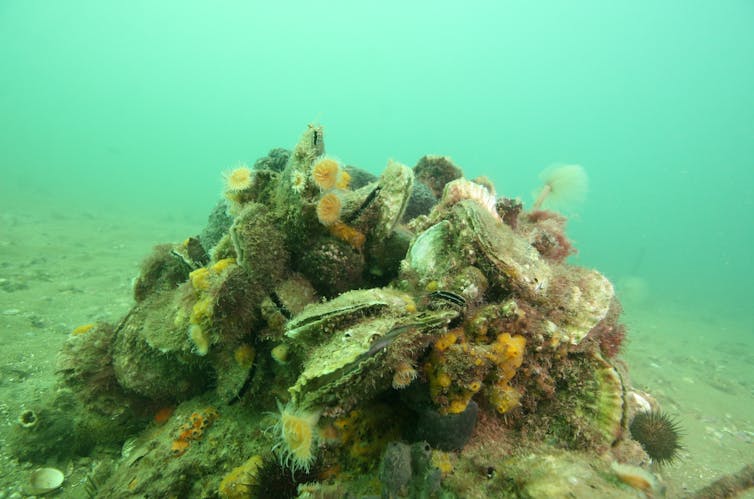
Australia once had vast oyster and mussel reefs, which anchored marine ecosystems and provided a key food source for coastal First Nations people. But after colonisation, Europeans harvested them for their meat and shells and pushed oyster and mussel reefs almost to extinction. Because the damage was done early – and largely underwater – the destruction of these reefs was all but forgotten.
No longer. We have learned how to restore these vital reef systems. After a successful pilot in 2015, there are now 46 shellfish reef restorations underway – Australia’s largest marine restoration program ever undertaken. It’s not a moment too soon. There’s just one natural reef remaining for the Australian flat oyster, which is teetering on extinction.
How did shellfish reefs go from forgotten to frontline? Our new research shows how this historical amnesia was overcome through a national community of researchers, conservationists, and government and fisheries managers.
This matters, because oysters and mussels are ecological superheroes. As we restore these reefs, we give local marine life a real boost and support human livelihoods reliant on healthy seas. These cold-water reefs play a similar role to coral in tropical seas. They give hiding places and food to baby fish, filter seawater and defend coastlines against erosion from waves.

What Killed Our Original Shellfish Reefs?
Just 200 years ago, shellfish reefs carpeted Australia’s temperate regions, filling up sheltered bays and estuaries around over 7,000 kilometres of coastline.
Archaeological research from Queensland shows First Nations people were sustainably harvesting local shellfish reefs over at least 5,000 years, replenishing oyster populations by building reefs with stone and shell.
This ended as Europeans took the lands and waters from Traditional Owners. Shellfish became one of colonial Australia’s first fisheries. Oysters were fished extensively for food, while their shells were burnt to manufacture lime for fertiliser and cement. If you walk past a colonial-era building, look at the mortar. Chances are, a lot of oyster shells went into it.
Even though the wild fishery ended a century ago, these shellfish weren’t able to return. That’s because they can’t just grow on bare sand. Their preferred substrate is the shells of their ancestors, left behind on the sea bottom. Once substrate was scraped by dredge or smothered by sediment, there was nowhere for baby oysters and mussels to settle and grow.
Today, there’s just one small natural flat oyster reef (Ostrea angasi) and six remnant Sydney Rock oyster (Saccostrea glomerata) reefs remaining, across all Australian waters.
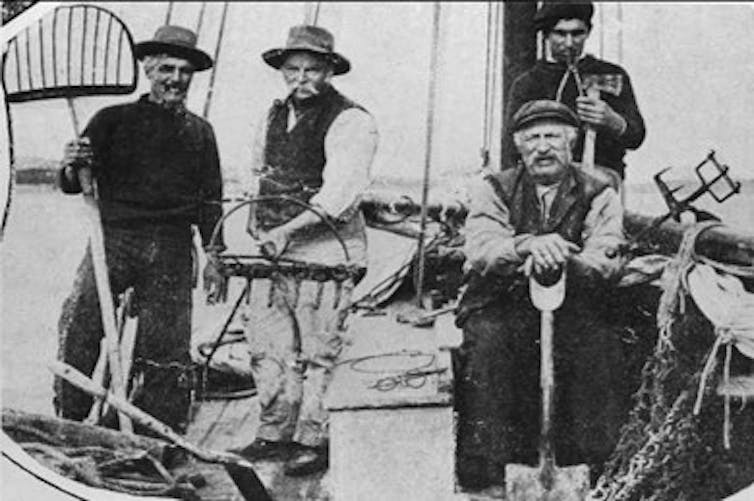
How To Kick-Start Shellfish Reef Restoration
Shellfish can’t recover by themselves. But it turns out with a little human help, they can. Think of it as making up for our unsustainable use.
For a decade before the first large-scale restoration, recreational fishing groups and community groups worked on smaller projects, sometimes with government backing.
To begin larger-scale restoration work, we first had to remember how it used to be. Because the ecological collapse of Australia’s shellfish reefs was so profound, they were almost lost to human memory. Historical records guided us as to what a restored ecosystem should look like, and where these reefs used to be.

Our job was made easier because of the huge benefits shellfish reefs provide to marine life. Intact oyster and mussel reefs are natural fish factories providing nursery habitats for economically important fish species like bream and whiting.
Even better, these filter-feeding shellfish are the kidneys of the coast, cleaning water cloudy with sediment or overloaded with nutrients. A single oyster can filter 100 litres of water a day. Shellfish reefs also act as living defences against the energy of waves, store carbon in their shells and help protect intertidal communities from the warming climate through shade and moisture at low tide.
People working on reef restoration turned to our thriving oyster and mussel farming industry to understand their life cycles and what they needed to thrive. The fact these farms are successful indicated many areas remained suitable for shellfish reefs.
Environmental NGO The Nature Conservancy connected the emerging reef restoration community as well as bringing practical experience from longer-running shellfish restoration projects in America. Reef restoration work is now being led by conservation NGOs, local and state governments, and, increasingly, by community groups.
So does it work? Yes. It’s as if the oysters have been waiting for this opportunity. Many human-made reefs have been settled by millions of baby oysters within months of construction, such as the largest project to date, the 20 hectare Windara Reef in South Australia. Some restored reefs are closing in on oyster densities in line with natural reefs.
Looking Forward
We hope the rapid rise of shellfish reef restoration is the beginning of a new era for large-scale marine restoration in Australia.
Today, community-led restorations are growing in scale and number, and public support for shellfish restoration is widespread.
It is an impressive story. This is a national program of recovery showing significant successes with a relatively modest investment. These restoration efforts show large-scale action to repair nature can work – and work quickly – when experts from a range of disciplines work with communities towards a common goal.
As the restored oyster and mussel reefs mature, we will see more fish in our seas and more recreation and tourism opportunities emerging. That, in turn, could give more communities the idea to restore their own shellfish reefs. Together, we can bring back the reefs which lived in our cooler seas for millennia. ![]()
Dominic McAfee, Postdoctoral researcher, marine ecology, University of Adelaide; Chris Gillies, Adjunct Associate Professor in marine ecology, James Cook University; Christine Crawford, Senior research fellow in marine biology, University of Tasmania; Ian McLeod, Professorial Research Fellow in Marine Biology, James Cook University, and Sean Connell, Professor, Program Director of Stretton Institute, Program Director of Environment Insitute, University of Adelaide
This article is republished from The Conversation under a Creative Commons license. Read the original article.
‘Unacceptable costs’: savanna burning under Australia’s carbon credit scheme is harming human health
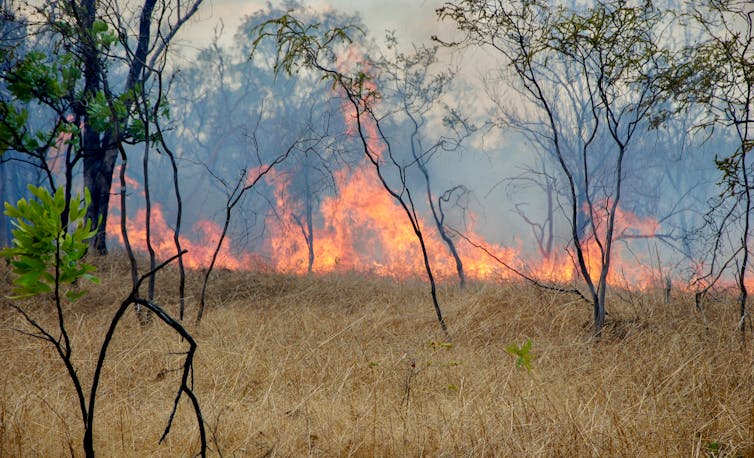
Savanna burning projects in northern Australia provide economic benefits to Indigenous communities and claim to reduce greenhouse gas emissions. But our research suggests smoke from these projects is harming human health.
Northern Australia’s savannas cover about 25% of Australia’s land mass. They’re among the most flammable regions in the world and comprise 70% of Australia’s fire-affected area each year.
Savanna fire management involves strategically burning grasslands early in the dry season, purportedly to reduce the chance of large, intense, more carbon-intensive fires later in the season. Under Australia’s Emissions Reduction Fund, land managers who undertake savanna burning receive financial rewards in the form of carbon credits.
But our research, focused on Darwin, has shown savanna burning under the fund is making air pollution worse. A review of the fund now underway must consider these unacceptable costs to human health.
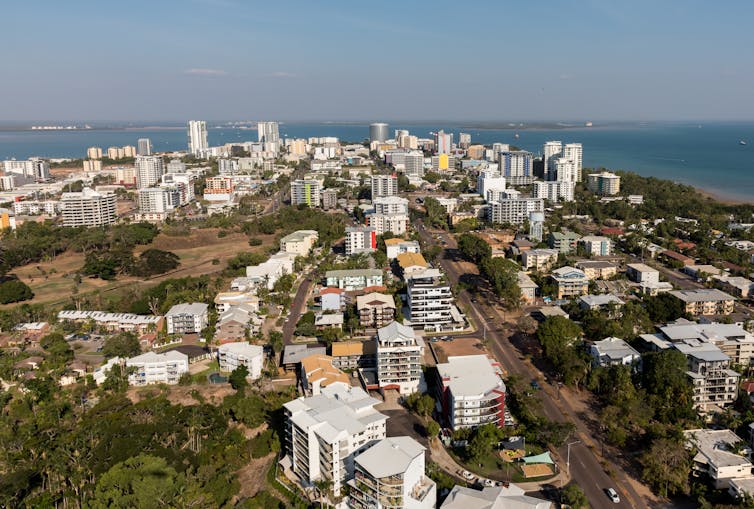
The Top End’s Smoke Problem
Savanna fire management is currently a topic of substantial global interest – much of it stemming from its potential to reduce carbon emissions.
The underlying premise is that early dry season burning releases fewer emissions than late dry season burning. This is because the fuel is moister and weather conditions milder — hence fires will be less extensive, less fuel will combust and less carbon will be released.
In Australia, savanna burning programs for carbon abatement were developed in the mid-2000s and integrated into the carbon market. Land managers are offered financial incentives to burn large amounts of savanna before the end of July each year.
The scheme has proved popular: registered projects now cover some 25% of Australia’s 1.2 million km² tropical savannas, including 55% of land within 500km of Darwin.
Australia now touts itself as a world leader in savanna burning. We are sharing the practice with other regions around the world, and savanna burning programs linked to carbon markets have been proposed elsewhere.
Yet the smoke pollution consequences of such programs are rarely considered. In Australia’s Top End, for example, thick and prolonged smoke blankets communities every dry season. Darwin, a city of 158,000 people, regularly exceeds the Australian air quality standard for particulate matter.
In Darwin, smoky days bring more hospital admissions for lung and heart disease, and more emergency department presentations for asthma. These impacts disproportionately affect Indigenous people.
Almost all Darwin’s particulate pollution is caused by landscape fires. In the early dry season, almost all of this is generated by prescribed burning - and there’s been a marked increase in burning in recent years linked to carbon abatement schemes.
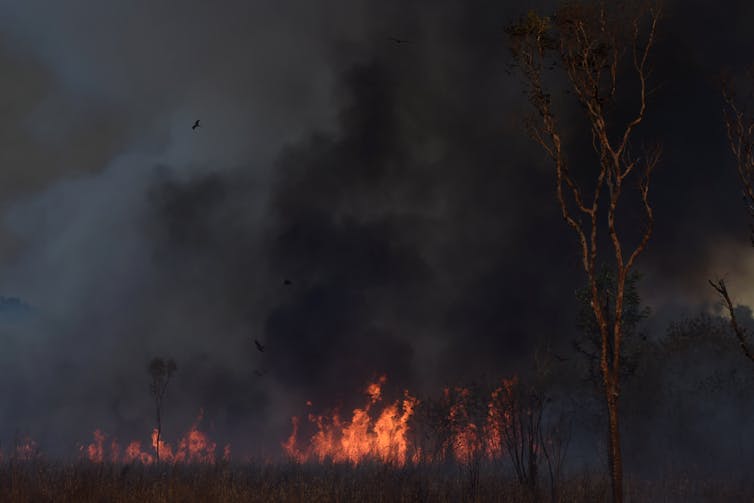
What Our Research Found
Our research considered the relationship between prescribed burning and smoke pollution in Darwin from 2004 to 2019.
We first assessed the very small particles found in smoke known as PM2.5. We then analysed fire activity within a 500km radius, and assessed the links between pollution, weather and fire.
The results showed air quality worsened in Darwin in the early dry season (particularly in June and July), with an increase in the annual number of severely polluted days.
Perhaps surprisingly, air quality did not change substantially in other seasons. In other words, shifting savanna burning to the early dry season did not appear to lead to better air quality later in the season.
Our findings highlight a complex story. Despite a substantial expansion of savanna burning for carbon abatement over our study period, net annual PM2.5 concentrations in Darwin did not decline. In fact, there was an increase in the number of times the national air quality standard was exceeded.
So what’s driving these results? One important factor involves large areas of savanna burned for carbon abatement to the southeast of Darwin in the early dry season. At that time of year, a steady south-easterly trade wind hits Darwin, bringing much of the smoke from these fires with it.
Fuel dynamics may also be at play. Native and non-native grasses which are highly flammable in the early dry season have been expanding on frequently burned savannas. Higher temperatures may be drying fuel out earlier in the dry season. These factors may make early dry season fires as extensive and intense as savannas burnt later in the season.
Our research comes with caveats. For example, we drew only broad inferences about the geographic sources of smoke over Darwin. Notwithstanding this, our results clearly demonstrate Darwin’s already significant air quality problem is worsening, rather than improving, in association with increased early dry season burning.
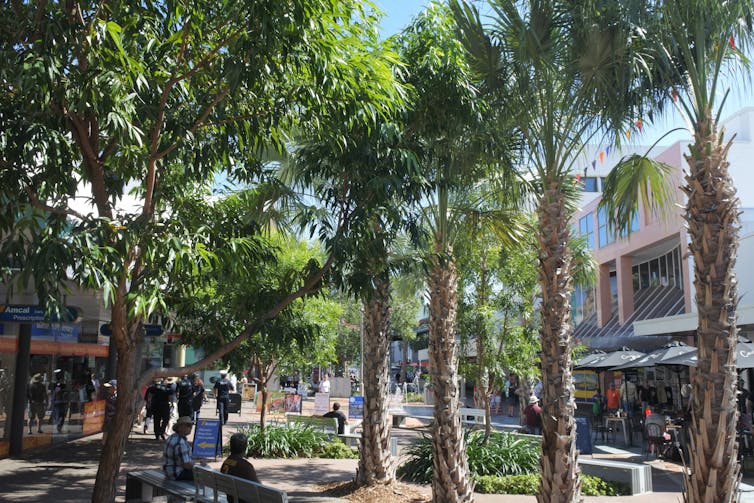
A Balancing Act
None of this means savanna burning should cease, nor that traditional owners should not be paid to manage fire on country. But it does mean policies should be designed so unintended harm is minimised and the benefits are maximised.
Policymakers must consider how to regulate burning to avoid smoke pollution exposure. In Darwin, particular attention may be needed in locations southeast of the city. One solution may be to regulate how much smoke can be released in a specific area on a given day.
Other factors should be considered too. For example, savanna burning in Australia may risk harming biodiversity.
But the Emissions Reduction Fund is a blunt tool which doesn’t consider these hidden costs and other nuances.
The new Labor government has ordered an independent review of the fund. For this review to fulfil its brief, all unintended harms must be taken into account. ![]()
Penelope Jones, Research Fellow in Environmental Health, University of Tasmania; David Bowman, Professor of Pyrogeography and Fire Science, University of Tasmania, and Fay Johnston, Professor, Menzies Institute for Medical Research, University of Tasmania
This article is republished from The Conversation under a Creative Commons license. Read the original article.
Southern conifers: meet this vast group of ancient trees with mysteries still unsolved
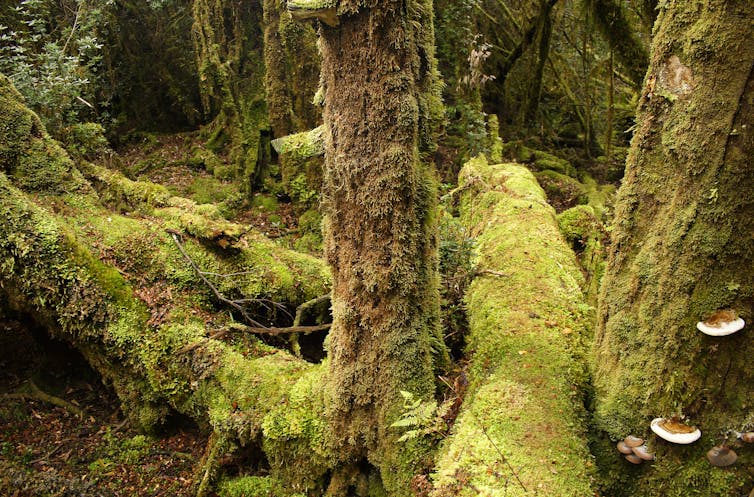
When you think of “conifers”, tall, conical shaped trees often found in public parks or front yards may spring to mind. But these impressive trees are far more fascinating than you may have realised, as they represent just one piece of an unsolved botanical puzzle.
These popular garden trees are from the northern hemisphere. But we also have conifers in the southern hemisphere, called “southern conifers”, found largely in Australia, South America, New Zealand and New Caledonia.
A little detective work reveals that southern conifers evolved in Gondwana, and long ago separated from coniferous relatives in the northern hemisphere.
They appeared around 200 million years ago, before the first flowering plants evolved, sharing land with the dinosaurs. One example is the Wollemi pine, which was famously saved in a secret firefighting operation during the 2019-2020 bushfires.
Unlike the introduced conifer garden trees, southern conifers are neither as well-known nor as popular with Australians as they should be. So let me help you get to know them a little better.
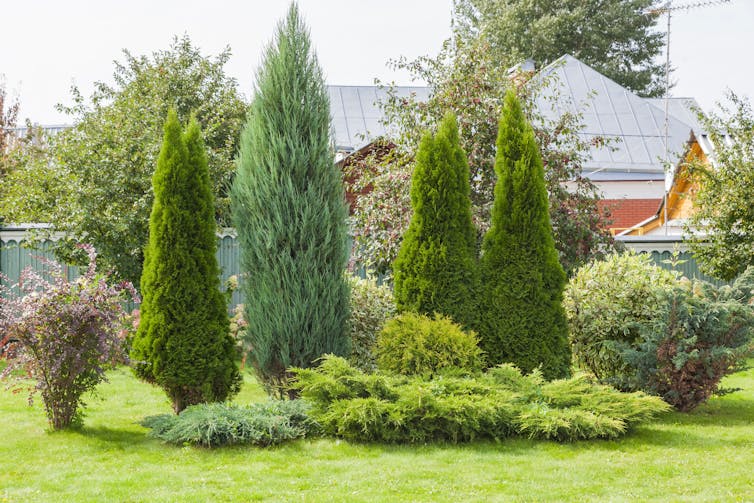
Famous ‘Living Fossils’
Northern conifers are mostly evergreen, woody trees with needle-like leaves, while southern conifers tend to have broad leaves like flowering trees.
Trees in the genus Araucaria, including the monkey puzzle, bunya bunya, hoop pine and Norfolk Island pine, are southern conifers. As are most members of the Podocarp family (Huon pine, celery top pine and plum pine) and 22 species of Agathis (including the majestic Queensland and New Zealand Kauri trees).
Southern conifers often possess cones, such as the Araucaria and Agathis species. Sometimes, these cones are very large and heavy that can cause serious injury if they fall from high in the tree onto an unsuspecting passerby.
Some southern conifers can be over 30 metres high. Others, such as the Kauri and Huon pine, are renowned for their longevity. They can live for centuries or, for the Huon pine, perhaps over an astonishing ten millennia.
While all species of southern conifers are of ancient origin, the Wollemi pine is famous for its status as a “living fossil”. Of course, this is a contradiction in terms – a fossil is any evidence of past life.
But in this context, the term refers to organisms that appeared in the fossil record long ago, were then thought to be extinct, before a living version was discovered. We are curious as to how they successfully hid for so long and may imagine a link with a distant, different past.

So, the question botanists have yet to answer is: how distant are the north and south relatives?
When Flowering Plants Evolved
Many southern conifers show little resemblance to the “true conifers” of the northern hemisphere, such as pine, cedar, spruce and juniper.
All conifers are gymnosperms, which means they have naked seeds and cones. They evolved from an ancient group of seed ferns, before the fragmentation of the super continent Pangaea.
These seed ferns were a diverse group. As Pangaea divided into Gondwana in the south and Laurasia in the north, the seed ferns began to diversify, giving rise to northern and southern seed ferns.
Botanists have long known that northern conifers and other gymnosperms evolved from these northern seed ferns. But what of the southern seed ferns? They remained a bit of a mystery until the 1970s.
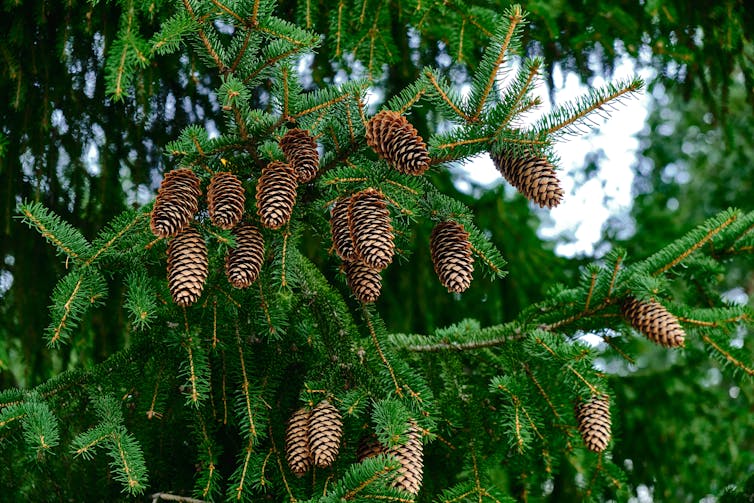
One group of southern seed ferns constituted what’s now called the Glossopteris flora, which was of Gondwanan origin. From this diverse group of Glossopterids, flowering plants in all their variety evolved.
This solved one of the great riddles of botany – the origin of the flowering plants which had puzzled scientists, particularly in the northern hemisphere until the early 1980s.
It’s likely southern conifers also evolved from these southern seed ferns. Some may have arisen from other members of the Glossopteris group, too, or perhaps their relatives.
If this was the case, then the southern conifers would be more closely related to flowering plants than to the true conifers of the north.
When The Trees Were In Fashion
After millions of years of evolution, southern conifers became fashionable with gardeners in the 1800s.
Their novelty and striking form captured the interest of the educated and wealthy landowners of Europe and they were planted as status symbols on estates and in public gardens.
In Australia they were planted in large private gardens and in many public parks from the mid 1800s to World War 1, after which their popularity waned.
You can see many of these fine trees growing still in large gardens and public parks across Australia, such as botanic gardens in most Australian states, as well as in smaller public parks and gardens of older suburbs and inland towns. Their striking, almost geometrical, form catches the eye.
Southern conifers are known for their resilience, are rarely affected by pests or disease and, despite their large size, cause few problems with paths, roads, buildings and other urban infrastructure. Probably because they were given plenty of space to grow when first planted.
We Still Have Much To Learn
It takes time to solve some of these botanical puzzles. Evolution is a sophisticated process that has led to very complex relationships between plant groups.
In future we may well recognise that southern conifers are not really conifers at all. Perhaps, the links between the two groups go so far back in time, the relationship is too distant for both southern and true conifers to be called conifers at all.
In any case, these mysterious trees have persisted through vast periods of time and changing environments – they have much to teach us about plant responses to climate change.![]()
Gregory Moore, Senior Research Associate, School of Ecosystem and Forest Sciences, The University of Melbourne
This article is republished from The Conversation under a Creative Commons license. Read the original article.
Who’s holding back electric cars in Australia? We’ve long known the answer – and it’s time to clear the road
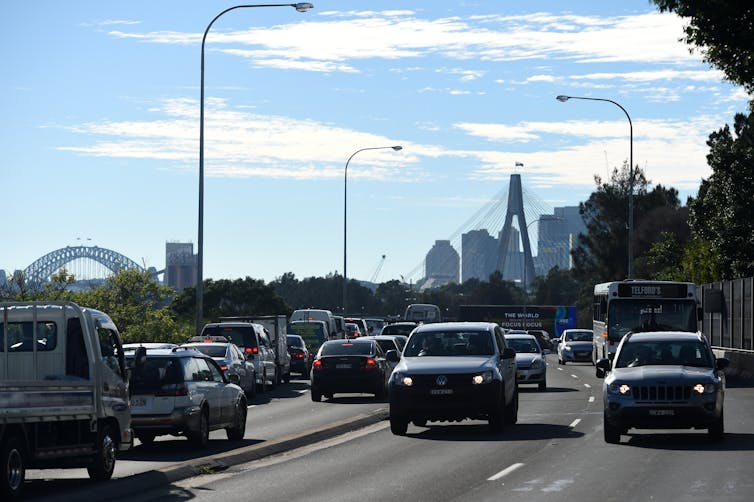
New analysis this week found strong fuel efficiency standards would have saved Australia A$5.9 billion in fuel costs and emissions equal to a year’s worth of domestic flights if the policy was adopted in 2015.
The finding, by think-tank the Australia Institute, puts further pressure on the new federal government to bring our fuel efficiency standards in line with Europe and other developed nations.
Unlike other comparable countries, Australia does not have fuel efficiency standards for motor vehicles. On the face of it this is puzzling; aside from lower costs for motorists and fewer emissions, the policy would also decrease our reliance on imported oil.
But opposition from vested interests – including oil refineries and the car dealership industry – has held Australia back. The onus is now on the Albanese government to enact this obvious and long overdue policy which is crucial to the electric vehicle transition.

Long Road, Little Progress
So how would a fuel efficiency standard work?
Under a likely model, the government would set a national limit, averaged across all new cars sold, stipulating grams of CO₂ that can be emitted for each kilometre driven. This measure depends on fuel-efficiency: that is, the amount of fuel burnt per kilometre.
The limit would not apply to individual cars. Instead, each supplier of new light vehicles to Australia would have to make sure the mix of vehicles does not exceed the limit. Low-efficiency vehicles could still be sold, but car dealers would have to balance this out by selling enough high-efficiency vehicles.
Because electric vehicles don’t use fuel (or use less, in the case of hybrids), a fuel efficiency standard would give suppliers an incentive to include electric vehicles in the mix of vehicles they supply.
The prospect of fuel efficiency standards on light vehicles has regularly hit the national agenda in recent years.
In 2014, the Climate Change Authority prepared a detailed plan for a standard and estimated the likely economic savings. The plan seemed well timed. Australia has traditionally produced large, fuel-guzzling cars like the Holden Commodore and Ford Falcon. At the time of the plan’s release, however, the last remaining domestic car manufacturers had just announced plans to close, removing the most likely source of political resistance.
But the Coalition government sat on the idea. It ran a string of reviews before ultimately letting the issue drop.
In 2019, then-Opposition Leader Bill Shorten pledged fuel efficiency standards, as well as a target for electric vehicles to comprise half of new car sales by 2030. But he soon ran into Scott Morrison’s jibe that Labor wanted to “end the weekend” and take away people’s utes.
Labor, of course, lost that election and Anthony Albanese dumped the fuel standards idea on becoming party leader.

But What About The Benefits?
A fuel efficiency standard would deliver significant benefits to Australia.
The first is economic. The report released this week is just the latest of many studies showing motorists would have been slugged far less at the bowser if our cars used fuel more efficiently.
The second benefit is tackling climate change. Transport accounts for nearly 20% of Australia’s emissions and this share is increasing.
And while lab tests suggest cars sold in Australia are becoming somewhat more efficient, real world testing shows the opposite. If we are to achieve emissions cuts consistent with the goals of the Paris agreement, cutting emissions from transport is essential.
Third, Australia is almost entirely dependent on foreign fuel. So new efficiency standards would decrease overall liquid fuel consumption, leaving us less reliant on imports.

What’s Holding Us Back
So why hasn’t Australia introduced this clearly beneficial policy? In short, because fuel inefficiency is deeply embedded in Australia’s automotive sector.
The strongest initial resistance to fuel efficiency standards came from the operators of refineries. Fuel-efficient cars require high-quality fuel. But Australia has long had among the dirtiest petrol in the developed world in terms of sulphur content.
Australian refiners resisted fuel efficiency standards because they said the cost of upgrading their plants would put them out of business. But the Morrison government last year funded upgrades at Australia’s last two oil refineries, removing one obstacle.
Further resistance has come from car dealers. From a dealership perspective, it’s easier to sell a car with a low sticker price even if lifetime running costs are higher.
Fuel efficiency standards, and the subsequent large-scale shift to electric vehicles, would fundamentally undermine the business model of the Australian car dealership industry. Much of its profitability comes from after-sales services required to maintain warranty protection, such as oil changes, transmission fluid and tune-ups.
None of these are needed in electric vehicles. The lifetime costs of maintaining an electric vehicle engine are about half those for a comparable internal combustion engine. At some point in their lives, an electric vehicle will require a new battery. But this will occur long after the initial sale.
Given all this, it’s not surprising the car industry is reportedly campaigning to limit any new fuel efficiency standards and delay the shift to electric vehicles.

What Now?
The Albanese government has proposed some incentives to encourage a shift towards electric vehicles. But these limited measures won’t drive the dramatic transition that is needed.
Strong fuel efficiency standards would save motorists money, cut emissions and reduce Australia’s dependence on imported fuel. Anyway you look at it, the policy makes sense.![]()
John Quiggin, Professor, School of Economics, The University of Queensland
This article is republished from The Conversation under a Creative Commons license. Read the original article.
Pittwater Reserves: Histories + Notes + Pictorial Walks
A History Of The Campaign For Preservation Of The Warriewood Escarpment by David Palmer OAM and Angus Gordon OAM
America Bay Track Walk - photos by Joe Mills
An Aquatic June: North Narrabeen - Turimetta - Collaroy photos by Joe Mills
Angophora Reserve Angophora Reserve Flowers Grand Old Tree Of Angophora Reserve Falls Back To The Earth - History page
Annie Wyatt Reserve - A Pictorial
Avalon's Village Green: Avalon Park Becomes Dunbar Park - Some History + Toongari Reserve and Catalpa Reserve
Bairne Walking Track Ku-Ring-Gai Chase NP by Kevin Murray
Bangalley Headland Bangalley Mid Winter
Banksias of Pittwater
Barrenjoey Boathouse In Governor Phillip Park Part Of Our Community For 75 Years: Photos From The Collection Of Russell Walton, Son Of Victor Walton
Barrenjoey Headland: Spring flowers
Barrenjoey Headland after fire
Bayview Baths
Bayview Wetlands
Beeby Park
Bilgola Beach
Botham Beach by Barbara Davies
Bungan Beach Bush Care
Careel Bay Saltmarsh plants
Careel Bay Birds
Careel Bay Clean Up day
Careel Bay Playing Fields History and Current
Careel Creek
Careel Creek - If you rebuild it they will come
Centre trail in Ku-ring-gai Chase National Park
Chiltern Track- Ingleside by Marita Macrae
Clareville Beach
Clareville/Long Beach Reserve + some History
Coastal Stability Series: Cabbage Tree Bay To Barrenjoey To Observation Point by John Illingsworth, Pittwater Pathways, and Dr. Peter Mitchell OAM
Cowan Track by Kevin Murray
Curl Curl To Freshwater Walk: October 2021 by Kevin Murray and Joe Mills
Currawong and Palm Beach Views - Winter 2018
Currawong-Mackerel-The Basin A Stroll In Early November 2021 - photos by Selena Griffith
Currawong State Park Currawong Beach + Currawong Creek
Deep Creek To Warriewood Walk photos by Joe Mills
Drone Gives A New View On Coastal Stability; Bungan: Bungan Headland To Newport Beach + Bilgola: North Newport Beach To Avalon + Bangalley: Avalon Headland To Palm Beach
Duck Holes: McCarrs Creek by Joe Mills
Dunbar Park - Some History + Toongari Reserve and Catalpa Reserve
Dundundra Falls Reserve: August 2020 photos by Selena Griffith - Listed in 1935
Elsie Track, Scotland Island
Elvina Track in Late Winter 2019 by Penny Gleen
Elvina Bay Walking Track: Spring 2020 photos by Joe Mills
Elvina Bay-Lovett Bay Loop Spring 2020 by Kevin Murray and Joe Mills
Fern Creek - Ingleside Escarpment To Warriewood Walk + Some History photos by Joe Mills
Iluka Park, Woorak Park, Pittwater Park, Sand Point Reserve, Snapperman Beach Reserve - Palm Beach: Some History
Ingleside
Ingleside Wildflowers August 2013
Irrawong - Ingleside Escarpment Trail Walk Spring 2020 photos by Joe Mills
Irrawong - Mullet Creek Restoration
Katandra Bushland Sanctuary - Ingleside
Lucinda Park, Palm Beach: Some History + 2022 Pictures
McCarrs Creek
McCarr's Creek to Church Point to Bayview Waterfront Path
McKay Reserve
Mona Vale Beach - A Stroll Along, Spring 2021 by Kevin Murray
Mona Vale Headland, Basin and Beach Restoration
Mount Murray Anderson Walking Track by Kevin Murray and Joe Mills
Mullet Creek
Narrabeen Creek
Narrabeen Lagoon Catchment: Past Notes Present Photos by Margaret Woods
Narrabeen Lagoon State Park
Narrabeen Lagoon State Park Expansion
Narrabeen Rockshelf Aquatic Reserve
Nerang Track, Terrey Hills by Bea Pierce
Newport Bushlink - the Crown of the Hill Linked Reserves
Newport Community Garden - Woolcott Reserve
Newport to Bilgola Bushlink 'From The Crown To The Sea' Paths: Founded In 1956 - A Tip and Quarry Becomes Green Space For People and Wildlife
Pittwater spring: waterbirds return to Wetlands
Pittwater's Lone Rangers - 120 Years of Ku-Ring-Gai Chase and the Men of Flowers Inspired by Eccleston Du Faur
Pittwater's Parallel Estuary - The Cowan 'Creek
Resolute Track at West Head by Kevin Murray
Resolute Track Stroll by Joe Mills
Riddle Reserve, Bayview
Salvation Loop Trail, Ku-Ring-Gai Chase National Park- Spring 2020 - by Selena Griffith
Seagull Pair At Turimetta Beach: Spring Is In The Air!
Stapleton Reserve
Stapleton Park Reserve In Spring 2020: An Urban Ark Of Plants Found Nowhere Else
The Chiltern Track
The Resolute Beach Loop Track At West Head In Ku-Ring-Gai Chase National Park by Kevin Murray
Towlers Bay Walking Track by Joe Mills
Trafalgar Square, Newport: A 'Commons' Park Dedicated By Private Landholders - The Green Heart Of This Community
Tranquil Turimetta Beach, April 2022 by Joe Mills
Turimetta Beach Reserve by Joe Mills, Bea Pierce and Lesley
Turimetta Beach Reserve: Old & New Images (by Kevin Murray) + Some History
Turimetta Headland
Warriewood Wetlands and Irrawong Reserve
Whale Beach Ocean Reserve: 'The Strand' - Some History On Another Great Protected Pittwater Reserve
Wilshire Park Palm Beach: Some History + Photos From May 2022
Winji Jimmi - Water Maze
DVA Claims Processing Among Urgent Recommendations In Royal Commission Interim Report
- Clearing the backlog of Department of Veterans' Affairs (DVA) claims
- Simplifying and harmonising complex and confusing veteran compensation and rehabilitation laws
- Increasing legal protections for serving and ex-serving ADF members to engage with the Royal Commission
- The exemption of the Royal Commission from parliamentary privilege, to make it easier for the inquiry to hold Defence and DVA to account
- For Defence and DVA to improve access for serving and ex-serving members (and their families) to their service information, including medical records
- summary of work undertaken
- preliminary observations
- recommendations about urgent and immediate issues
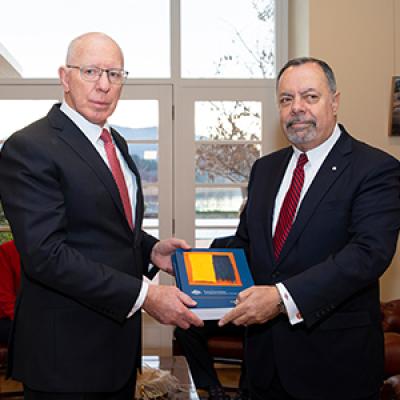
Caravan Industry On Notice For Poor Treatment Of Consumers
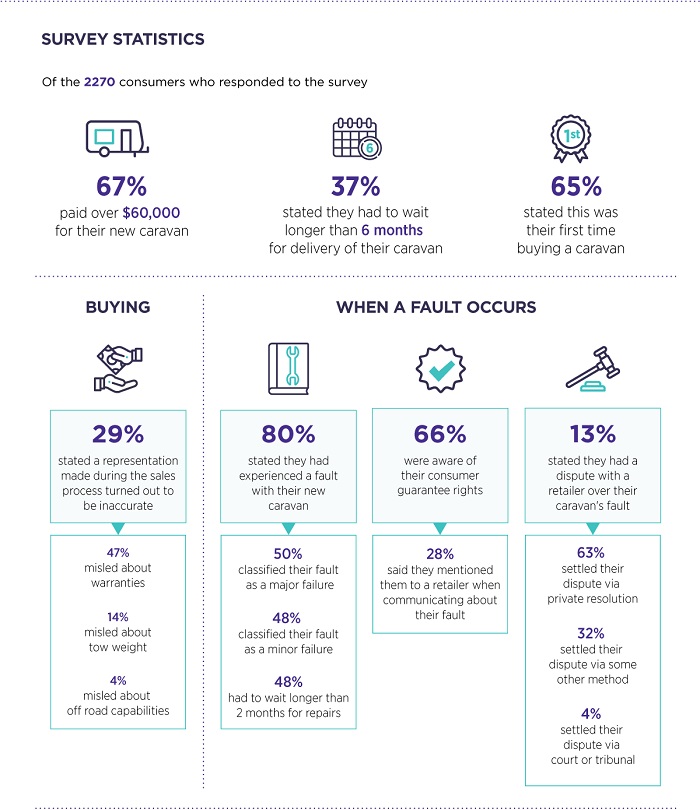
Major Contributor To Alzheimer's Disease Discovered
Dementia Action Week
19 – 25 September 2022
- Give a little support to a person living with dementia.
- Give a little support to a carer, friend or family member of a person living with dementia.
- Help healthcare professionals make their practice more dementia-friendly.
What created the continents? New evidence points to giant asteroids

Earth is the only planet we know of with continents, the giant landmasses that provide homes to humankind and most of Earth’s biomass.
However, we still don’t have firm answers to some basic questions about continents: how did they come to be, and why did they form where they did?
One theory is that they were formed by giant meteorites crashing into Earth’s crust long ago. This idea has been proposed several times, but until now there has been little evidence to support it.
In new research published in Nature, we studied ancient minerals from Western Australia and found tantalising clues suggesting the giant impact hypothesis might be right.
How Do You Make A Continent?
The continents form part of the lithosphere, the rigid rocky outer shell of Earth made up of ocean floors and the continents, of which the uppermost layer is the crust.
The crust beneath the oceans is thin and made of dark, dense basaltic rock which contains only a little silica. By contrast, the continental crust is thick and mostly consists of granite, a less dense, pale-coloured, silica-rich rock that makes the continents “float”.
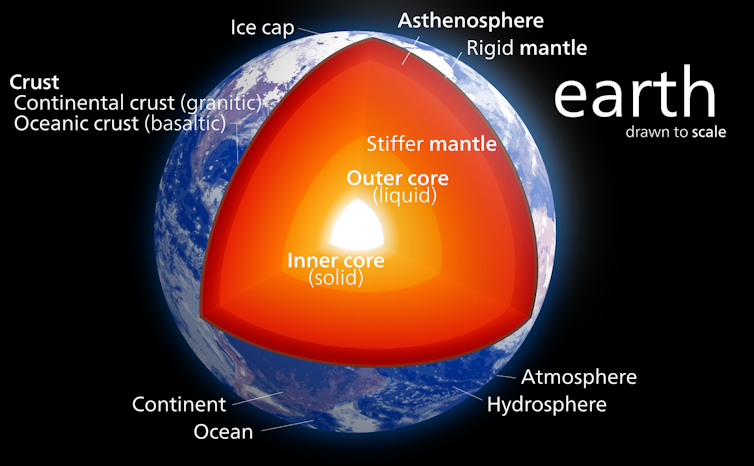
Beneath the lithosphere sits a thick, slowly flowing mass of almost-molten rock, which sits near the top of the mantle, the layer of Earth between the crust and the core.
If part of the lithosphere is removed, the mantle beneath it will melt as the pressure from above is released. And impacts from giant meteorites – rocks from space tens or hundreds of kilometres across – are an extremely efficient way of doing exactly that!
What Are The Consequences Of A Giant Impact?
Giant impacts blast out huge volumes of material almost instantaneously. Rocks near the surface will melt for hundreds of kilometres or more around the impact site. The impact also releases pressure on the mantle below, causing it to melt and produce a “blob-like” mass of thick basaltic crust.
This mass is called an oceanic plateau, similar to that beneath present-day Hawaii or Iceland. The process is a bit like what happens if you are hit hard on the head by a golf ball or pebble – the resulting bump or “egg” is like the oceanic plateau.
Our research shows these oceanic plateaus could have evolved to form the continents through a process known as crustal differentiation. The thick oceanic plateau formed from the impact can get hot enough at its base that it also melts, producing the kind of granitic rock that forms buoyant continental crust.
Are There Other Ways To Make Oceanic Plateaus?
There are other ways oceanic plateaus can form. The thick crusts beneath Hawaii and Iceland formed not through giant impacts but “mantle plumes”, streams of hot material rising up from the edge of Earth’s metallic core, a bit like in a lava lamp. As this ascending plume reaches the lithosphere it triggers massive mantle melting to form an oceanic plateau.
So could plumes have created the continents? Based on our studies, and the balance of different oxygen isotopes in tiny grains of the mineral zircon, which is commonly found in tiny quantities in rocks from the continental crust, we don’t think so.
Zircon is the oldest known crustal material, and it can survive intact for billions of years. We can also determine quite precisely when it was formed, based on the decay of the radioactive uranium it contains.
What’s more, we can find out about the environment in which zircon formed by measuring the relative proportion of isotopes of oxygen it contains.
We looked at zircon grains from one of the oldest surviving pieces of continental crust in the world, the Pilbara Craton in Western Australia, which started forming more than 3 billion years ago. Many of the oldest grains of zircon contained more light oxygen isotopes, which indicate shallow melting, but younger grains contain a more mantle-like balance isotopes, indicating much deeper melting.
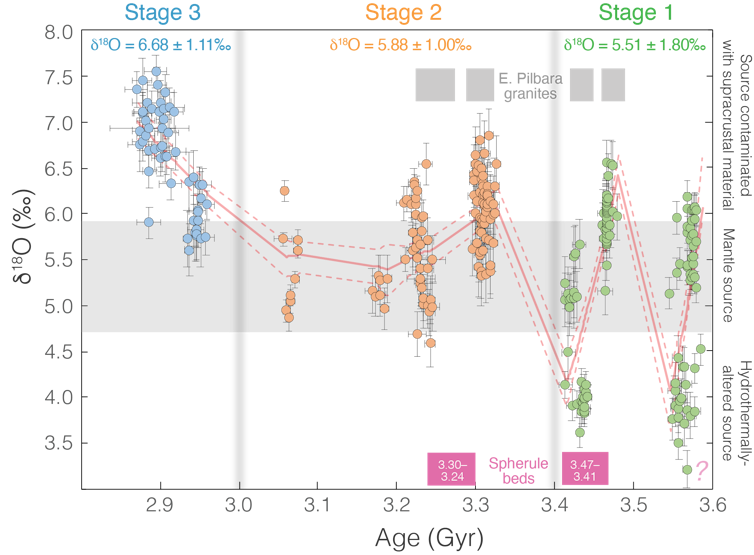
This “top-down” pattern of oxygen isotopes is what you might expect following a giant meteorite impact. In mantle plumes, by contrast, melting is a “bottom-up” process.
Sounds Reasonable, But Is There Any Other Evidence?
Yes, there is! The zircons from the Pilbara Craton appear to have been formed in a handful of distinct periods, rather than continuously over time.
Except for the earliest grains, the other grains with isotopically-light zircon have the same age as spherule beds in the Pilbara Craton and elsewhere.
Spherule beds are deposits of droplets of material “splashed out” by meteorite impacts. The fact the zircons have the same age suggests they may have been formed by the same events.
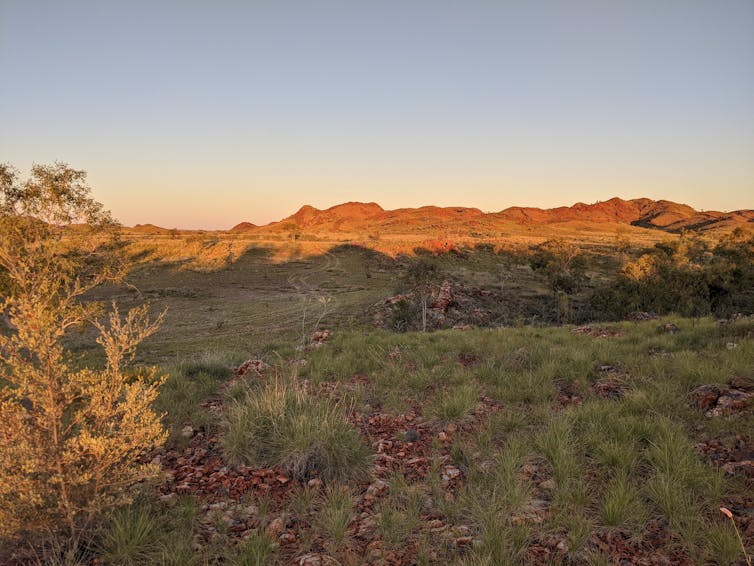
Further, the “top-down” pattern of isotopes can be recognised in other areas of ancient continental crust, such as in Canada and Greenland. However, data from elsewhere have not yet been carefully filtered like the Pilbara data, so it will take more work to confirm this pattern.
The next step of our research is to reanalyse these ancient rocks from elsewhere to confirm what we suspect – that the continents grew at the sites of giant meteorite impacts. Boom.![]()
Tim Johnson, Associate Professor, Curtin University
This article is republished from The Conversation under a Creative Commons license. Read the original article.
New AMA President And Vice President Elected At AMA National Conference
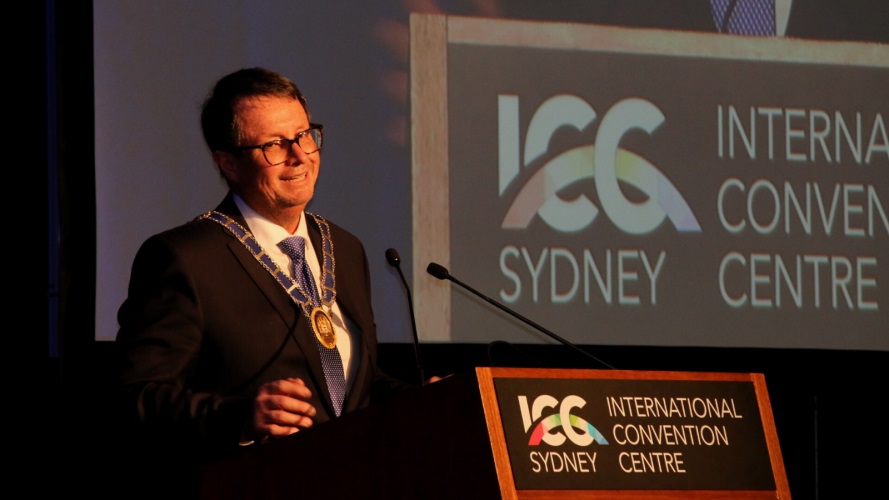
The Seekers - I'll Never Find Another You
Olivia Newton John - Let Me Be There
Nullarbor
Pop icon Olivia Newton-John was the rare performer whose career flourished through different phases
Catherine Strong, RMIT UniversityOlivia Newton-John was a versatile artist with an appeal that spanned generations, and who played an important role in claiming a space for Australian popular culture on the world stage.
She was the rare performer whose career flourished through different phases, and who found success exploring many facets of her talent.
Born in Cambridge in 1948, Newton-John moved to Melbourne at age 6 (becoming one of a myriad of non-Australian celebrities wholeheartedly claimed by this country).
In her teens she started to build up her profile on the local performing circuits, also appearing on pop music television program The Go!! Show.
In the 1960s, Australian musical acts saw moving to the UK as a vital part of their career progression. Newton-John became part of the steady stream of expats pursuing their music in “the mother country” after winning a talent competition that provided her with tickets.
When her friend Pat Carroll joined her, the two found success touring as a pop duo, before visa troubles meant Carroll had to return to Australia.
This led to new opportunities for Newton-John as a solo artist. Her first album If Not For You (1971) was a success in the UK and Australia, establishing her as a household name in those countries – and leading to opportunities such as a performance at Eurovision representing the UK in 1974 (she lost to ABBA).
Her break in the US market came as she found a niche in the country music genre. Country/pop crossover songs such as Let Me Be There were huge hits, and in 1972 she won a Grammy for Best Country Female – the first of four Grammys she would win across her career.
Her move to the US in the mid-1970s was accompanied by a string of number one hits in that country, establishing her as an international superstar.
Life On The Silver Screen
Her star continued to rise with the release of the musical Grease in 1978.
Sandy established her as a genuinely iconic pop culture figure.
Grease was a huge box-office success, and produced a multi-million copy selling soundtrack. Tracks such as You’re the One That I Want and Summer Loving were not only hits in their own right at the time but have become embedded in our cultural memory, transcending generations with their appeal.
Grease was the peak of her movie career. Attempts to re-create the on-screen magic between herself and co-star John Travolta in Two of a Kind and the fantastical Xanadu (a personal childhood favourite) failed to gain traction with audiences or critics.
But her contributions to the soundtracks of these films – including Magic and Twist of Fate – still charted highly as her musical career stayed strong.
Away From The Spotlight
In the early 1980s she was seen as part of the “Australian invasion”, a period where Oz culture was particularly prominent on the international stage through acts such as Air Supply and the Little River Band.
Newton-John leaned into the moment. In 1983, she launched her Koala Blue boutique selling Australian fashion and cultural items, in collaboration with her previous singing partner Pat Carroll. The boutique lasted a little over a decade, during which time Newton-John had a family and put less focus on her music career.
A planned comeback in 1992 had to be put on hold when Newton-John was diagnosed with breast cancer shortly before beginning her tour.
Her journey with the disease inspired her to take up advocacy and fundraising work in this area. The Olivia Newton-John Cancer Wellness and Research Centre fundraises in various ways, including through events such as the annual Wellness Walk.
The return of Newton-John’s cancer in 2017, which would eventually lead to her death, also spelled the end of her touring career.
A Lasting Legacy
Newton-John leaves a legacy as a sweet girl-next-door type with a sublime voice, who embraced the country that claimed her as its own, but who also at times showed a more risqué side, such as in Sandy’s leather jumpsuit, or the cheeky video to the unapologetically sexual Physical.
She has already been recognised through awards and honours.
She has been inducted into the ARIA Hall of Fame. In 2020 she was appointed a Dame in the Queen’s New Year honours list. She has also been a continuing part of the cultural conversation through appearances on pop culture staples such as Drag Race.
She remained down-to-earth and friendly, regularly turning up to events like the Wellness Walks to chat to participants and encourage them on.
Like many Australians, ONJ has been part of the soundtrack to my life – from arranging my own little performances to Xanadu in kindergarten, to singing along to the Grease megamix at school discos, to discovering her earlier work through my research much later in life – and many have benefitted from her non-musical work, too.
She will be missed but never forgotten.![]()
Catherine Strong, Associate professor, Music Industry, RMIT University
This article is republished from The Conversation under a Creative Commons license. Read the original article.
Six Behaviours To Increase Your Confidence: Emily Jaenson - TEDxReno
Published August 11, 2022 by TEDx Talks
Research tells us that the way to get people to change is not to start with trying to change their attitudes alone, but to start with the behaviors associated with the attitudes. When people see themselves behaving differently, they can then think of themselves differently and the attitude change will follow. The six behaviors discussed that you could start today are derived from over 90 interviews with female executives in sports.
Emily Jaenson’s motto is “Be so good they won’t forget you!” and this motto has carried her through her career to land her former role as General Manager of the Triple-A Reno Aces. Upon accepting this role in 2018, Jaenson became the first female in Triple-A to hold the GM role in nearly 20 years. Jaenson leads a podcast, Leadership is Female, where she interviews executives in sport so that she and her guests can guide the next generation of female leadership forward and leads a team of sports front office veterans in their consulting business. This talk was given at a TEDx event using the TED conference format but independently organised by a local community. Learn more at https://www.ted.com/tedx
Be The Boss: I Want To Be A Music Producer
We all LOVE music, right? But not all of us will become GREAT Musicians - however, there is an industry career that will allow you to support musicians, that of Music or Record Producer.
Years ago, as part of doing some research into the Doppler Effect and wondering what whole notes our planets sound (a heartbeat), how the sequence of these may create a 'song of our galaxy', the best way to find out more about sound production to recreate that range of notes was to do a Music Producer course in at Surry Hills. Since then it is noted this same great crew of then has expanded and now offer courses in Sydney still but also in Melbourne and Brisbane. They were, and are, the JMC Academy, and there is some fee help available through this organisation, you can check them out here: pages.jmcacademy.edu.au/Sept22_Production.html - there's a new course starting September 22nd, 2022.
But what is a Music Producer?
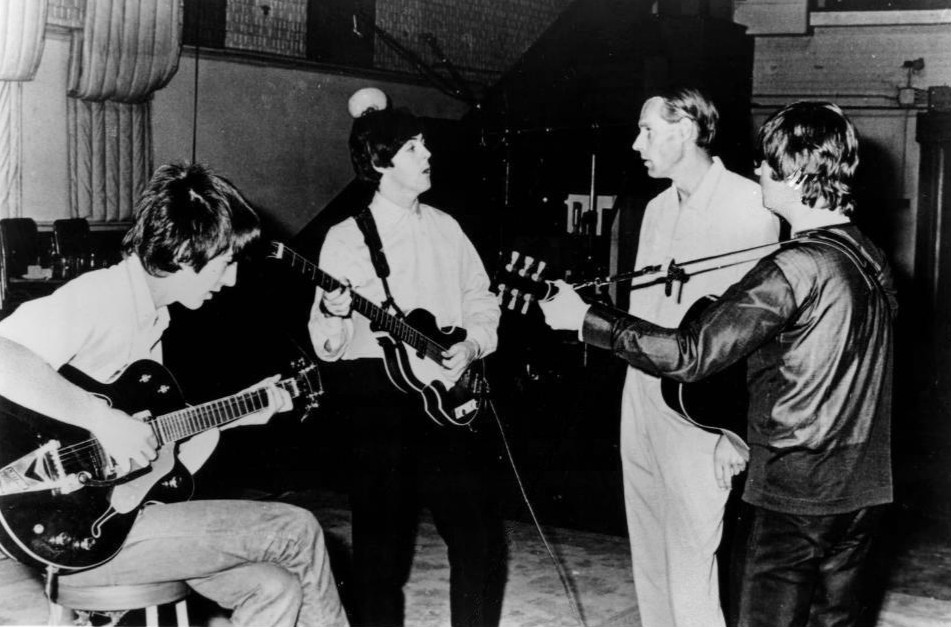 A music producer writes, arranges, produces and records songs for other artists or for their own projects.
A music producer writes, arranges, produces and records songs for other artists or for their own projects.
Work activities
As a music producer, you would:
- work with musical artists in a recording studio to record new songs
- choose songs with the artist
- work out musical arrangements and hire musicians
- arrange, set up and use microphones and other recording equipment
- meet with new artists and music industry professionals to schedule work
- generate ideas for creative approaches to recording music
- develop budgets for music albums
- schedule the recording and mixing studios that an artist would use
- supervise the recording, overdubbing and mixing sessions, keeping within the decided budget
- at the major label level, work in shaping songs deemed to have commercial potential
- work closely with artists to elicit consistent and outstanding vocal or instrumental performances
- keep to a record label’s deadlines
- produce music for games, film and TV, and video commercials.
Key skills and interests
To become a music producer, you would need:
- a broad knowledge of musical styles
- well developed technical skills
- extensive knowledge of audio recording techniques and the best way to use music studio equipment
- the ability to use microphones and computer software to engineer quality recordings
- an awareness of new musical trends and new audio production technology
- creativity and flexibility
- good project management and time management skills.
Working hours and conditions
Music producers work irregular hours. They are also likely to have to attend music industry events, concerts and performances out of hours, during evenings, and on weekends.
Music producers may be self-employed, work for a recording studio or record label, or work on the production of music for games, film and TV, and video commercials. You would usually work in a studio. You would use a wide range of specialised recording, mixing and dubbing equipment, as well as computer software.
How to become an Music Producer?
You can work as a music producer without formal qualifications. Most producers begin the production phase of their careers after many years working their way up from junior level roles in the music industry, or in related industries such as film.
However, most producers are educated to degree level. You could undertake a Bachelor's degree in an area such as visual or creative arts, arts management or arts with a major in music studies. To get into these courses, you usually need to gain your senior secondary school certificate or equivalent.
Additional courses in music production may increase your chances of success in a very competitive environment. You will also need substantial experience in a broad range of musical styles, an in-depth understanding of the production process, and a good network of contacts in the industry.
Music producers face strong competition for jobs because there are many more people who want to work in this field than there are jobs available, but that doesn't mean you shouldn't follow your passion - if you have to make music, this could be your way in and may well lead to other opportunities presenting themselves along the way that could lead to your place in your chosen field.
Music Producer as a job information courtesy Australian Government Apprenticeships Guide (Your Career), Australian Open Colleges, Australian Careers HQ and The Good Universities Guide, Australia.
In text photo: Music producer Sir George Martin, best known for his work with The Beatles, pictured with members George Harrison, Paul McCartney and John Lennon at a recording session at Abbey Road in 1966
Also Available
Smooth Start To First HSC Exams
COVID-smart protocols are in place to ensure minimal disruption to the start of the 2022 HSC exams.
The NSW 2022 Higher School Certificate (HSC) exams have kicked off last weekend with more than 5,600 students completing their oral language exams. On Monday August 8th, HSC performance exams in Dance, Music and Drama began for more than 9,500 students.
With teachers having to provide marks for both oral language and performance exams last year due to COVID-19 disruptions, Minister for Education and Early Learning Sarah Mitchell said it was great to see the HSC return to normal.
“I know students starting their exams are breathing a sigh of relief having had a smoother start to their HSC journey,” Ms Mitchell said.
“All students can take comfort in that fact that we have stringent measures in place to reduce potential disruptions this year, including alternative arrangements if they are unable to sit an exam due to illness.”
Ms Mitchell said COVID-smart protocols would be in place, including physical distancing and strongly encouraging face masks. Hand sanitiser, alcohol wipes and masks will also be readily available to students.
“Our most important message to students is to stay home and get tested if you feel unwell on the day of an exam.”
Ms Mitchell said around 76,000 students are working to complete their HSC program this year, and languages was the first of 126 courses to be examined.
“Learning a second language is an invaluable experience and an important skill in a globalised world,” Ms Mitchell said.
“In NSW, we are surrounded by rich and diverse languages – and the NSW Curriculum provides students from all backgrounds the opportunity to engage with and value those cultures.”
HSC written exams will start on 12 October 2022, finishing on 4 November 2022. View the HSC timetable here
Funding To Enhance University Collaboration
August 10, 2022
Young people will be supported and encouraged to study at university, upskill and pursue entrepreneurship through innovative new projects that aim to enhance educational outcomes and break down barriers to university study.
Minister for Skills and Training Alister Henskens said four projects will receive a share of the $1.75 million NSW Government Collaboration and Innovation Fund, which focuses on supporting innovation and addressing challenges to partnerships within the university sector.
“These grants will help break down barriers that prevent people who want to study at our world class universities and will drive innovative new projects in collaboration with the university sector,” Mr Henskens said.
“Projects funded through this round of the program include workshops to encourage high school students to explore technology entrepreneurships and toolkits to help regional and culturally and linguistically diverse students bridge the skills gap between school and university.”
Projects funded through the Collaboration and Innovation Fund, include:
- Startup @ Schools (University of Technology Sydney and the University of Newcastle) with workshops to encourage Year 9 and 10 students to pursue technology-enabled entrepreneurship as a career;
- Teachers Aide Pathway (Charles Sturt University, TAFE NSW and Regional Development Australia Orana) to upskill teachers’ aides currently employed in NSW schools to become qualified teachers in regional communities;
- Start @ Uni (UNSW Sydney and The University of Sydney) for first-year regional and culturally and linguistically diverse students transitioning to university, which aims to address academic skills gaps between high school and university; and
- The Academy (University of New England and the Dhiiyaan Centre) preparing Aboriginal students for higher education from Year 8 through to tertiary enrolment via a curriculum that merges Aboriginal knowledge with science.
The Collaboration and Innovation Fund provides grants to support university projects that address education goals included in the NSW Higher Education Strategy.
Art Competition To Remember Our ANZACS
Word Of The Week: Scallywag
noun
1. a person, typically a child, who behaves badly but in an amusingly mischievous rather than harmful way; a rascal. 2. US; a white Southerner who collaborated with northern Republicans during the post-Civil War reconstruction period. 3. Scallywags (Second World War), a nickname for the British Auxiliary Units, who were to engage in guerrilla warfare in the event of a Nazi invasion.
The first citation of “scalawag” given by the Oxford English Dictionary is from J.R. Bartlett's 1848 Dictionary of Americanisms, which defines it as “a favourite epithet in western New York for a mean fellow; a scape-grace.”
scapegrace; Archaic - a mischievous or wayward person, especially a young person or child; a rascal.
Scallawag: In United States history, the term scalawag (sometimes spelled scallawag or scallywag) referred to white Southerners who supported Reconstruction policies and efforts after the conclusion of the American Civil War. As with the term carpetbagger, the word has a long history of use as a slur in Southern partisan debates. The post-Civil War opponents of the scalawags claimed they were disloyal to traditional values and white supremacy. Scalawags were particularly hated by 1860s–1870s Southern Democrats, who called Scalawags traitors to their region (long known for its widespread chattel slavery). Prior to the Civil War, most Scalawags had been opposed to the southern states' (the Confederacy's) secession from the United States.

A Sept. 1868 cartoon in Alabama's ''Independent Monitor'', threatening that the KKK would lynch scalawags (left) and carpetbaggers (right) on March 4, 1869, predicted as the first day of Democrat Horatio Seymour's presidency (the election winner was actually Ulysses S. Grant). The term is commonly used in historical studies as a descriptor of Reconstruction Era Southern white Republicans, although some historians have discarded the term due to its history of pejorative connotations.
Scallywags WWII: The Auxiliary Units or GHQ Auxiliary Units were specially-trained, highly-secret quasi military units created by the British government during the Second World War with the aim of using irregular warfare in response to a possible invasion of the United Kingdom by Nazi Germany, "Operation Sea Lion". With the advantage of having witnessed the rapid fall of several Continental European nations, the United Kingdom was the only country during the war that was able to create a multi-layered guerrilla force in anticipation of an invasion.
The Auxiliary Units would fight as uniformed guerrillas during the military campaign. In the event of an invasion, all Auxiliary Units would disappear into their operational bases and would not maintain contact with local Home Guard commanders, who were to be wholly unaware of their existence. Although the Auxiliaries were Home Guard volunteers and wore Home Guard uniforms, they would not participate in the conventional phase of their town's defence but would be activated once the local Home Guard defence had been ended to inflict maximum mayhem and disruption over a further brief but violent period. They were not envisaged as a continuing resistance force against long-term occupation. The secrecy surrounding the insurgent squads meant that members “had no military status, no uniforms and there are very few official records of their activities”.
Service in the Auxiliary Units was expected to be highly dangerous, with a projected life expectancy of just twelve days for its members, with orders to either shoot one another or use explosives to kill themselves if capture by an enemy force seemed likely.
Urged on by the War Office, Prime Minister Winston Churchill initiated the Auxiliary Units in the early summer of 1940. This was to counter the civilian Home Defence Scheme already established by SIS (MI6), but outside War Office control. The Auxiliary Units answered to GHQ Home Forces but were legally an integral part of the Home Guard.
In modern times, the Auxiliary Units have sometimes misleadingly been referred to as the "British Resistance Organisation". That is a title was never used by the organisation officially but reflects a subsequent misunderstanding of what their role might have been. Colloquially, members of the Auxiliary Units were referred to as "scallywags" and their activities as "scallywagging".

Operational base, reconstruction at Parham Airfield Museum. Photo courtesy Gaius Cornelius
Skimmed ALIVE - Skim Boarding The Biggest Waves On The Planet. Featuring Lucas Fink. Profile 2
by Surfing Visions - Tim Bonython
Published August 10, 2022
Nazare the home of the worlds biggest ridable wave attracts fearless riders of all sorts of craft. Here we a profile the world champ skim boarder Lucas Fink maximising himself on some of the biggest waves ever ridden on a skim board in PART 2 of Big Wave Surfer Profiles. ENJOY
Three lessons Olivia Newton-John taught me about music – and life

My default mental image of Olivia Newton-John is from the mid-1970s: long, flowing floral dresses; long, centre-parted light brown hair; big inquisitive eyes; and, when called for, an irresistible smile perfect for the cover of TV Week.
It seemed like the counterculture had passed her by.
But even in the heights of my hippie and punk-inspired (imagined, toothless) rejections of society and a perceived mainstream, I respected Olivia, a figure so ubiquitous in popular culture during my first 20 years on the planet it feels natural to call her by her first name.
There was something about her voice, her way with a song. Through her phrasing and timbre, there was always a personal appeal to her singing.
Like heatstroke in December-through-February, Olivia was part of the Australian landscape. The country felt a little less hostile for her being in it - or beamed into it from the northern hemisphere, while we claimed her as “ours”.
There was a big sister who understood and sympathised.
1. What She Taught Me About Murder
Despite all this, Olivia did contribute to a certain loss of innocence.
Some of us are unlucky enough to encounter death personally as children; for the rest it will be a song or a TV show, a passing remark or a news item.
Newton-John’s recording of the folk ballad Banks of the Ohio was released in 1971. It concerns the protagonist luring their loved one down to the river to stab them through the heart.
I held a knife against his breast
As into my arms he pressed
He cried: My love! Don’t you murder me
I’m not prepared for eternity.
I can’t think of an earlier exposure to the idea of death, let alone murder. I associate it with the tinny sound of a portable AM radio. I have the honeyed tones of ONJ forever linked to the visceral realisation one human being could wilfully kill another.
Heavy metal and hip hop are the traditional punching bags of parents worried about harmful content. But people let their guards down around ONJ.
2. What She Taught Me Through A Cover Band
Shaggin’ Wagon, a cover band of mine instigated around 1993, did what it said on the label: rocked the hell out of songs from the 1970s.
We combined relatively obscure minor chart hits – say, Silver Lady by David Soul, or Ebony Eyes by Bob Welch – with what we thought of as a classic lineage of power pop by the likes of Big Star, The Soft Boys, The dB’s, The Sweet and Abba.
There was always a smattering of hard rock – Kiss, Alice Cooper – and Australian artists like The Numbers, Models and Dragon. Though the repertoire was always changing, there were a few big crowd pleasers to bring the house down.
One of mine, as part-time singer, was Hopelessly Devoted to You. What started as half a joke I took to with gusto. It is a great song, with a fantastic key change from A major in the verses to F major in the chorus via a devastating G minor chord.
“There’s nowhere to hide”, wallows the protagonist on that pitiful chord, harmonically so removed from the plaintive longing of comfortable A major we’ve swooned through thus far.
I started to search for other Olivia songs. I picked up a 45 of A Little More Love and realised it was a kind of masterpiece; like Hopelessly it was composed by longtime Newton-John collaborator John Farrar.
It is another beautifully structured song, somewhat labyrinthine. Even now I find it a thrill to play on the guitar.
Despite my party trick of (usually) being able to hit the high F at the end of Hopelessly, sustaining the upper octave required for the choruses of A Little More Love was beyond me.
The attempt further educated me about the technical demands Olivia shrugged off. The range is so wide that no matter how I transposed it, I could not pull off both low verses and high choruses.
I already knew she was good – and I’d never claim to be anywhere near ONJ’s league – but this was further proof being learned by my body.
3. What She Taught Me About The Girl-Next-Door
Olivia wasn’t entirely convinced about Physical. She loved the song but wondered: could she get away with it?
Tired of the flirtation and game-playing, the protagonist wants to get down to it: “There’s nothin’ left to talk about unless it’s horizontally”.
The record was banned in Utah and South Africa due to its explicit content (!). The video further fanned the flames, with its closing “gay scene” (two guys leaving the gym holding hands).
Every bit of controversy just further hyped what was a superlative pop record. Physical topped the US charts for 10 weeks in 1981 and was one of the biggest songs of the decade. And if Physical wasn’t enough, the follow up single was Make a Move On Me.
You’d be forgiven for sensing a theme.
Physical, the album, is about more than a seasoned pop star trying on a slightly more risqué persona. None of the six images of Newton-John on the cover feature her looking at the camera, or even with her eyes open.
She does not challenge the camera or voyeur with her direct gaze, and so may be seen to be offering herself as an object to be consumed; the assumption along this line of reasoning is she avails herself of the male gaze.
I find it more compelling to consider her lost in her body. The viewer, the whole world outside her physical sensation, is irrelevant.
Despite the fact the music remains eminently accessible, she is not looking to her audience for approval.
Physical is the definitive statement of independence – from country music radio, from her pre-1978 image as girl-next-door, from a certain level of conservatism in her audience.
She even cut her hair.![]()
John Encarnacao, Musician, lecturer, Western Sydney University
This article is republished from The Conversation under a Creative Commons license. Read the original article.
Olivia Newton-John gave a voice to those with cancer and shifted the focus to the life of survivors
Alex Broom, University of SydneySince news of Olivia Newton-John’s death this week, many have paid tribute to her character, humble nature and cultural significance.
She also made a significant contribution to cancer survivorship and the ideal of treating the whole person, not just their disease.
Newton-John was diagnosed with breast cancer in 1992 and underwent a partial mastectomy, chemotherapy and breast reconstruction. Her cancer journey spanned three decades, and as she explained:
The whole experience has given me much understanding and compassion, so much so that I wanted to help others going through the same journey.
Bringing Our Attention To Cancer
Getting the community mobilised around difficult topics like cancer can be tough. Celebrities – and their experience of illness and healing – have become one of the most powerful means for mobilising action.
Olivia Newton-John was one of the first to share her experience of breast cancer with a wide audience and her advocacy opened the door for others such as Kylie Minogue and Angelina Jolie to share theirs.
Stories like theirs have mobilised cancer screening and research, prompting reflection and normalised the experience of living with cancer.
The ‘Alternative’ Voices Of Cancer Survivorship
The diverse approach Newton-John took to cancer treatment was a distinguishing part of her legacy. As she explained when establishing the Olivia Newton-John Cancer Wellness & Research Centre:
I did herbal formulas, meditation and focused on a vision of complete wellness.
Explaining her “pro cannabis” stance on 60 minutes in 2019, she reflected a growing recognition of community interest in diverse approaches to pain and symptom management, and how such community views often rub up against legal and regulatory constraints. Australia only legalised medicinal cannabis in 2016, and many reservations persist among the Australian medical community.
Being open about her experience, Newton-John gave voice to things which many Australian cancer patients try, and believe in, but many in the medical community continue to push back on. In Australia, more than half of people living with cancer use alternative treatments over the course of their cancer journeys. Yet, alternative practices, including herbal products and medicinal cannabis, remain largely absent from mainstream cancer care. This risks putting mainstream medicine out of step with community beliefs.
As regularly noted, managing patient interest in “alternative” cancer care is a tricky area, but what is clear is that openness and frank discussions serve everyone best. A harm-reduction approach, which discusses and detects any dangerous side-effects or interactions, is safer than silencing what people living with cancer are doing or believe in.
Challenges To Unhelpful Cancer Narratives
Cancer has suffered from a wide range of misconceptions and misrepresentations, ranging from ideas about cancer as a “death sentence”, or the idea that you either beat it or succumb to it. People often feel this does them a disservice.
People with cancer are so much more than a “cancer patient”, and they don’t want to be trapped in that frame. They can live well with cancer, without focusing entirely on trying to be cancer-free to the exclusion of all else. Newton-John emphasised this idea regularly.
Likewise, the expectation of “cancer heroics” is an all-consuming and unhelpful cultural ideal. Sometimes “fighting” works and is needed, but in many contexts and particularly for long-term survivors, focusing on quality of life and wellness is critical.
This is likely why various alternative practices have gained traction, despite the slim evidence base for many. The world of “alternative therapies” has tended to present to the community a more person-centred approach, regardless of whether this is actually achieved by many practitioners in practice.
Towards ‘Survivorship’
Cancer “survivorship”, in its broadest sense, denotes a broad focus, inclusive of the mind, body and the social life of the person living with cancer, not merely their disease, symptoms or treatment side-effects.
Even two decades ago, the emphasis was almost exclusively placed on curative cancer treatment, treatment discovery, or post-curative experiences. This overly disease-centred focus tended to marginalise the many people who will continue to live on with cancer.
Person-centred approaches, in their many forms, show considerable benefit, although there continues to be a diverse set of understandings about what it actually means. The broad principle of person-centredness is that we are much more than a disease and this matters throughout all aspects of care. Our care needs to be structured around our beliefs, psychological and social needs and life experiences. This may sound simple, but it is often not a central part of the picture.
While we are making progress, as Newton-John was acutely aware, there is so much more to do in this realm. Based on our most recent estimates more than one million Australians alive today are either currently living with cancer or have lived with it. Strategies which help all of us touched by cancer to live well, whether cured or not, should be the priority moving forward.
While we must be careful not to push too far in the other direction – a cruel optimism which threatens to sideline the hard, sad and often difficult experiences of cancer – a balance is needed which we have not quite reached.
Olivia Newton-John’s death will likely be difficult for some living with cancer. Important survivorship stories, when they come to a close, are difficult. So, let’s not pretend. Endings are hard, but a life well lived it also something to celebrate.
![]()
Alex Broom, Professor of Sociology & Director, Sydney Centre for Healthy Societies, The University of Sydney., University of Sydney
This article is republished from The Conversation under a Creative Commons license. Read the original article.
Eddie Betts’ camp saga highlights a motivational industry rife with weird, harmful ideas
Ben Farr-Wharton, Edith Cowan University; Matthew Xerri, Griffith University, and Yvonne Brunetto, Southern Cross UniversityFormer AFL star Eddie Betts’ revelations about the 2018 Adelaide Crows training camp, which left him feeling like he had been brainwashed and sapped his passion for football, raises all sorts of questions.
But the most obvious is how could the Crows’ management, running an elite organisation with a team that had made the grand final the year before, treat its most valuable assets – its players – so badly?
Who decided the bullying and abusive behaviour that reportedly traumatised individuals and fractured the team was a good idea?
We can’t answer that. But as academics with experience in the “motivational industry”, we’re not all that shocked such things occurred.
The market for programs and processes to improve individual and organisational performance is huge, and with it comes faddish ideas with little or no basis in evidence.
A Shattering Experience
Betts’ account of the 2018 training camp, in his recently published autobiography The Boy from Boomerang Crescent, describes scenes of humiliation, misappropriation of Indigenous cultural practices and an emphasis on toxic aspects of masculinity.
The four-day preseason camp followed Adelaide making the 2017 AFL grand final but being trounced by the Richmond Tigers.
Betts describes being blindfolded, led onto a bus with papered-over windows and taken to a random location with Richmond’s club song (“Tigerland”) being played loudly over and over again.
He says there were criticism sessions in which “counsellors” yelled taunts at him about personal matters he believed he had disclosed in confidence:
I was exhausted, drained and distressed about the details being shared. Another camp-dude jumped on my back and started to berate me about my mother, something so deeply personal that I was absolutely shattered to hear it come out of his mouth.
The experience clearly left a lasting impression. Betts says his performance and relationship with his family suffered.
His account is disturbing. Equally concerning is how easily these kinds of inappropriate, confrontational and ethically dubious experiences occur in the name of “training” and “motivation”.
A Tough Idea With No Evidential Basis
As industry-engaged academics, we are experienced in developing, implementing and evaluating training and interventions that build psychological capital, resilience and wellbeing.
We can only presume the rationale for the training camp was to develop greater mental toughness.
But while it might be a commonly held belief that placing people in highly stressful and emotionally confronting circumstances will help them “sink or swim” and “face their fears”, the evidence shows this is not helpful. Indeed, it has the potential to be very harmful.
The brain is a highly efficient learning machine. It uses emotions (the automatic deployment of chemicals in the brain as a response to stimuli) to “bake in” memories – and, for that matter, skills.
When external stimuli trigger negative emotions, this leads to a “flight, fight or freeze” response. Long after the trigger and experience, the emotional and physiological reaction to the memory can remain.
This is called trauma. As described by Martin Seligman - often referred to as the “father of positive psychology” - if that trauma isn’t resolved it can lead to anxiety and depression, and even post-traumatic stress disorder.
The Time And Place For ‘Post-Traumatic Growth’
Decades of research in the field of psychology has led to the general understanding that there are times when it is appropriate for people to face emotionally confronting circumstances, particularly childhood experiences, that may have had a defining impact on a person’s behaviour or cognition.
However, there are very strict guidelines and protocols as to when and under what conditions this occurs. In Australia this is governed by the Psychology Board of Australia and underpinned by the Health Practitioner Regulation National Law Act.
In brief, such confrontation should only occur when a qualified and registered practitioner believes the person they are treating feels safe and supported, so the emotional and physiological reaction can occur in a contained way. When this occurs, it is called “post-traumatic growth” – and it must be done by a dedicated expert practitioner.
There are no circumstances under which an organisation, or those acting on behalf of it, should deliberately subject its employees to experiences that have the potential to be emotionally traumatic.
Indeed, Australia’s work health and safety regulations are increasingly making employers legally responsible for “psycho-social hazards” – anything that could cause psychological harm – at work. This includes aggressive, bullying behaviour and exposure to traumatic events.
In some workplaces, exposure to emotionally confronting events is unavoidable. Examples include aged-care and health-care workers who regularly have to confront human frailty and death; paramedics who have to attend car accidents; and police officers who are exposed to the very worst of human nature. Particularly for paramedics and police, substantial organisational resources are deployed to help mitigate the impact of exposure to trauma – although, sometimes, they can still fall through the cracks.
All Workplaces Should Be Safe And Respectful
The idea of provoking trauma for some organisational benefit is wrong. Do not ever believe that any good is done by doing harm. There is no evidence to support this.
Helping someone to achieve personal growth requires standard mental-health first-aid skills: listening; giving support and information; and encouraging them to seek appropriate professional help.
Betts’ reported experience is a reminder that engagements with colleagues, managers, subordinates, customers and clients at work should always be safe and respectful.
Deliberately exposing someone to an emotionally confronting situation is only likely to harm their ability to perform.![]()
Ben Farr-Wharton, Associate Dean of Management, Edith Cowan University; Matthew Xerri, Senior Lecturer in Human Resources, Griffith University, and Yvonne Brunetto, Professor of Management and HRM, Southern Cross University
This article is republished from The Conversation under a Creative Commons license. Read the original article.
How complex is your life? Computer scientists found a way to measure it

Nobel laureate economist Richard Thaler famously quipped:
People aren’t dumb, the world is hard.
Indeed, we routinely encounter problems in our everyday lives that feel complex – from choosing the best electricity plan, to deciding how to effectively spend our money.
Australian pay hundreds of millions of dollars each year to comparison websites and consumer-focused groups such as CHOICE to help them make decisions about products and services.
But how can we objectively measure how “complex” our decisions really are? Our recently published research offers one potential way to do this, by drawing on concepts from computer and systems science.
Why Bother Measuring Complexity?
There are several factors when it comes to measuring complexity in any scenario. For instance, there may be a number of options to choose from and each option may have several different features to consider.
Suppose you want to buy jam. This will be easy if there are only two flavours available, but difficult if there are dozens. Yet choosing an electricity plan would be much harder even with just two options.
In other words, you can’t isolate one particular factor when trying to determine the complexity of something. You have to consider the problem as a whole – and this requires a lot more work.
The ability to accurately measure complexity could have a wide range of practical applications, including informing the design of:
regulation on how complex products should be
easy to navigate digital systems including websites, apps and smart device programs
easy to understand products. These may be financial products (superannuation and insurance plans, credit card schemes), physical products (devices) or virtual products (software)
artificial intelligence (AI) that offers advice when problems are too complex for humans. For example, a scheduler AI may let you book meetings yourself, before jumping in to suggest optimal meeting times and locations based on your history.
How We Study Human Decision-Making
Computer science can help us solve problems: information goes in and one (or more) solutions come out. However, the amount of computation needed for this can vary a lot, depending on the problem.
We and our colleagues used a precise mathematical framework, called “computational complexity theory”, that quantifies how much computation is needed to solve any given problem.
The idea behind it is to measure the amount of computational resources (such as time or memory) a computer algorithm needs when problem-solving. The more time or memory it needs, the more complex the problem is.
Once this is established, problems can be categorised into “classes” based on their complexity.
In our work, we were particularly interested in how complexity (as determined through computational complexity theory) corresponds with the actual amount of effort people must put into solving certain problems.
We wanted to know whether computational complexity theory could accurately predict how much humans would struggle in a certain situation and how accurate their problem-solving would be.
Testing Our Hypothesis
We focused on three types of experimental tasks, for which you can see examples below. All of these task types sit within a broader class of complex problems called “NP-complete” problems.
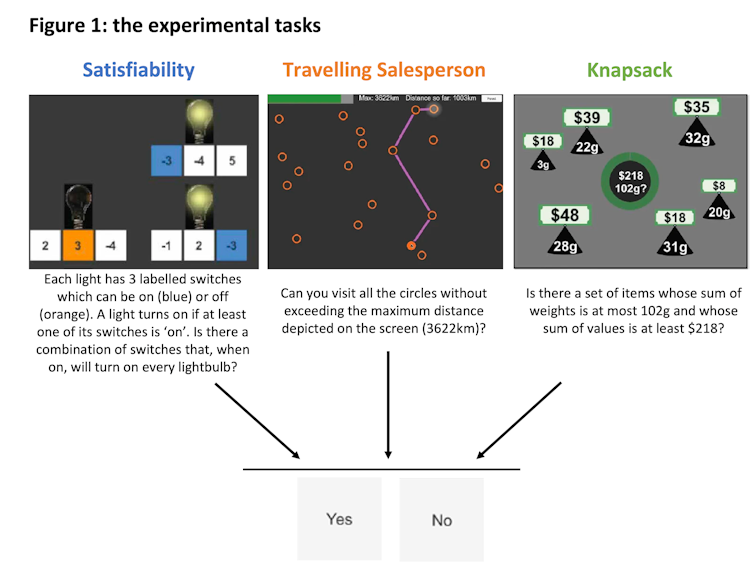
Each task type requires a different ability to perform well in. Specifically:
- “satisfiability” tasks require abstract logic
- “travelling salesperson” tasks require spatial navigation skills and
- “knapsack” tasks require arithmetic.
All three are ubiquitous in real life and reflect day-to-day problems such as software testing (satisfiability), planning a road trip (travelling salesperson), and shopping or investing (knapsack).
We recruited 67 people, split them into three groups, and made each group solve between 64-72 different variations of one of the three types of task.
We also used computational complexity theory and computer algorithms to figure out which tasks were “high complexity” for a computer, before comparing these with the results from our human problem solvers.
We expected – assuming computational complexity theory is congruent with how real people solve problems – that our participants would spend more time on tasks identified as being “high complexity” for a computer. We also expected lower problem-solving accuracy on these tasks.
In both cases that’s exactly what we found. On average, people did twice as well on the lowest complexity cases compared to the highest complexity cases.
Computer Science Can Measure ‘Complexity’ For Humans
Our results suggest effort alone is not enough to ensure someone does well on a complex problem. Some problems will be hard no matter what – and these are the spaces in which advanced decision aids and AI can shine.
In practical terms, being able to gauge the complexity of a wide range of tasks could help provide people with the necessary support they need to tackle these tasks day-to-day.
The most important result was that our computational complexity theory-based predictions about which tasks humans would find harder were consistent across all three types of task – despite each requiring different abilities to solve.
Moreover, if we can predict how hard humans will find tasks within these three problems, then it should be able to do the same for the more than 3,000 other NP-complete problems.
These include similarly common hurdles such as task scheduling, shopping, circuit design and gameplay.
Now, To Put Research Into Practice
While our results are exciting, there’s still a long way to go. For one, our research used quick and abstract tasks in a controlled laboratory environment. These tasks can model real-life choices, but they’re not representative of actual real-life choices.
The next step is to apply similar techniques to tasks that more closely resemble real-life choices. For instance, can we use computational complexity theory to measure the complexity of choosing between different credit cards?
Progress in this space could help us unlock new ways to aid people in making better choices, every day, across various facets of life. ![]()
Karlo Doroc, PhD Candidate in Decision Science, Centre for Brain, Mind and Markets, The University of Melbourne
This article is republished from The Conversation under a Creative Commons license. Read the original article.
What is love? In pop culture, love is often depicted as a willingness to sacrifice, but ancient philosophers took a different view

Woven through Thor: Love and Thunder, Taika Waititi’s latest contribution to the Marvel Cinematic Universe, is a sentimental and age-old commentary on mortality and love.
In this intergalactic rom-com, the hammer-wielding Gods of Thunder face the shady “god butcher” Gorr in a race to the Gates of Eternity. Gorr has inherited his god-killing gift through a contract with the Necrosword, at the price of his own impending death.
Meanwhile, Thor’s ex-girlfriend, Dr. Jane Foster, is diagnosed with terminal cancer. Despite her best scientific efforts and the magic of the Mjolnir, she too only manages to delay the inevitable.
The stage is set for a story about love where the stakes are high because time is short.

Gorr’s god-killing spree is fuelled by revenge for the loss of his daughter, Love. Towards the end of the film, Thor risks his life to spend his final moments with Jane. He leaves Gorr to choose between his desire for revenge and spending his dying wish to revive Love. In awe of this sacrifice, Gorr chooses Love.
In the end, both Thor and Gorr put love before themselves.
The film thus appears to celebrate the youthful romantic love we find in Pyramus and Thisbe, or more famously Romeo and Juliet. But it also provides an opportunity to rethink this popular conception of love. Though they are godly, the central characters in this film find themselves grappling with mortal questions.
Does true love require self-sacrifice? This is where the philosophers come in.
An Ancient Greek Dinner Party
The ancient Greeks explored practically everything: the nature of the universe, how to organise a society and achieve justice, how to teach courage, what it means to be a good friend – and, of course, the art of love.
Greek philosophers mostly agreed that our primary purpose in life was to achieve a state of being known as eudaimonia. The eudaimonic life is a life well lived. But just what kind of beings are we? What are the virtues conducive to a good life? At the heart of these questions is, according to the ancient Greeks, the highest virtue: knowledge.
The most famous dialogue on love, Plato’s Symposium, set in 416 BCE, consists of a series of speeches exploring different perspectives on the nature of love and desire.
The dialogue takes place in the house of Agathon, who is celebrating his victory in a tragedy-writing competition. On this particular night, the speakers agree that, rather than get drunk again, they will each give a speech in honour of Eros, the God of Love.

The seven speakers are the ancient equivalents of the authorities of conventional erotic wisdom we have today. We meet a writer, a comedian, a philosopher, a scientist, an old lover, a young lover, and a hedonist. This curated list of invitees – we don’t really know if it is by Plato’s invention or Agathon’s invitation – are the representatives of the varieties of opinions on what love is.

If Thor and Gorr were invited to Plato’s Symposium, they might have agreed with Phaedrus’ claim that we would “rather die a thousand deaths” than be seen as a coward in the eyes of a lover. Bravery and courage are a gift from Eros to lovers, Phaedrus argues, and these virtues are honoured most highly when they belong to love.
Then there is Pausanias, who distinguishes between two kinds of love. There is the basic lover, who sees the function of love as purely instrumental and who “loves the body rather than the soul”.
And there is the richer kind: noble, lifelong love. Noble lovers see their beloved in a deeper way, honoring them for their intelligence and what makes them unique.
Aristophanes, the comedian in attendance, provides some comic relief and shares a myth which has become legend. To understand love, he says, you must understand our nature and development. He claims that lovers were once joined at the back and were round all over with four arms and four legs.
There was one head to the two faces, which looked opposite ways. The creature could walk or, if necessary, cartwheel at high speeds.
One day, the creatures conspired against the gods. In retaliation, Zeus decided to lessen their strength by slicing each creature in two. Apollo then made some important anatomical corrections, ensuring our heads face forwards rather than backwards, and pulling the skin in from the edges and tying it into the middle of the belly, making what we know as the navel.
“Love is born into every human being,” states Aristophanes; “it calls back the halves of our original nature together; it tries to make one out of two and heal the wound of human nature.”
We are all looking for our matching half, in order to feel whole.

Aristophanes’ story has become the most romanticised of them all.
Eryximachus, a doctor, sets out a scientific approach to the subject of love. Love affects everything in the universe, he argues, including plants and animals. It is a powerful force which is the source of life’s satisfaction. It brings us good friends and partners and brings us closer the gods. Love governs beautiful music and the harmony of the universe. When love is balanced inside of us, the result is health.
Agathon the tragedian argues that love fades as we age and becomes a practical love – agapē. The god of love “seeks food among flowers” and therefore will not settle on body or soul “whose flower has faded away”.
The Philosopher

Socrates recounts a conversation with the philosopher Diotima who, he says, taught him everything he knows about love. Diotima shows Socrates that love is a kind of joint ascension towards something greater. Love leads us towards good and beautiful things, the highest of which is knowledge.
Loving then, according to Diotima, is helping each other to become better people – to live more fulfilled eudemonic lives, together. We should show those we love “the great sea of beauty” that is the world and spark a love of wisdom.
Love, then, is a passionate, joint contemplation of the wonders of the universe.
Although Socrates’ speech is the longest and most philosophically intricate in the Symposium, it is not necessarily the definitive argument. Socrates gives us a richer conception of love than the other more conventional romantic accounts, taken as individual views.
But what is unique about the Symposium is that, unlike Plato’s other dialogues, the speeches do not end in aporia – a state of perplexity induced by Socrates’ methodical questioning (known as elenchus). This gives credence to the view that each of the speeches contains an element of truth and this makes love unlike other matters.
There is some truth to Aristophanes’ comedic myth. When you love someone, you treat their heart as if it were your own.
Eryximachus is right that love does bring us good friends and partners, and perhaps Agathon is right to say that love changes shape as we age.
What the Ancient Greeks are sure about is that fulfilled lives are marked by our practice of virtue – and this means that within all of our relationships, we ought to love with kindness, forgiveness, generosity, and patience. ![]()
Oscar Davis, Lecturer in Philosophy and History, Bond University
This article is republished from The Conversation under a Creative Commons license. Read the original article.
Part of the Japanese revolution in fashion, Issey Miyake changed the way we saw, wore and made fashion
Peter McNeil, University of Technology SydneyThroughout his career, Japanese fashion designer Issey Miyake, who has died of cancer at 84, rejected terms like “fashion”.
But his work allowed much of the world to reimagine itself through clothing.
Born in Hiroshima in 1938, Miyake studied graphic design in Tokyo where he was influenced by the Japanese-American sculptor Isamu Noguchi and the black and white photography of Irving Penn.
As soon as the post-war restrictions barring Japanese nationals from travelling abroad were lifted, he headed to Paris, arriving in 1964.
There, the young designer apprenticed for eminent haute couture fashion houses Guy Laroche and Hubert de Givenchy. Such houses made expensive clothes that conformed to prevailing standards of etiquette. Miyake was to go well beyond that.
Miyake was there for the Paris student revolt of 1968 and was galvanised by the youth quake shaking all rules of society.
The ready-to-wear concept by a couturier had been launched just a few years earlier when Yves Saint Laurent created Saint Laurent Rive Gauche in late 1966.
The fashion system was changing and Miyake rose to the challenge.
Japanese Fashion Revolution
Miyake arrived in Paris shortly after Kenzo’s “Jungle Jap” clothes had made waves, with their bright colours and unexpected patterns based partly on Japanese artistic traditions.
The Japanese revolution in fashion was commencing.
Japanese designers including Rei Kawakubo for Comme des Garçons, Yohji Yamamoto and Issey – all born in the 1930s and 40s – rose to prominence in the 70s and showed in Paris.
All questioned Eurocentric views of fashion and beauty. The Japanese designers reversed the Western focus on symmetry and tidiness and adopted aspects of Japanese aesthetic systems, such as Yamamoto’s use of black with colours such as red, purple, cerise, brown and dark blue.

Miyake held his first show in New York in 1971 and in Paris in 1973. He integrated technology with tradition, exploring Japanese aesthetics and the uncut, untailored garment. He also commissioned high-tech textiles that influenced fashion around the world.
Miyake’s BODY series included the famous bustiers of plastic, rattan and resin in which the female body was re-imagined as a type of armour.
In February 1982 the prominent journal Artforum photographed a Miyake bustier on its cover.
It was the first time a contemporary art journal had featured fashion.
Covering The Body
Throughout his career Miyake completely re-imagined the potential of textiles.
Working with his textile director Makiko Minagawa and Japanese textile mills, he began to create the famous Pleats collections: using thermally processed polyester textiles that are not pleated before sewing (the regular practice), but manufactured much larger, and then pleated in machines.
The Rhythm Pleats collection from 1989 was inspired by the French artist Henri Rousseau: Miyake took elements of the colour palette and the strange sculptural shells surrounding women in these paintings, a good example of how his influences were always abstract and suggestive.
His very commercial collection Pleats Please was launched in 1993.
The A-POC (A Piece of Cloth) collection (in collaboration with Dai Fujiwara, 1998) revolutionised clothing design and prefigured anxieties around the unsustainability of fashion and its attendant waste. Clothes were knitted in three dimensions in a continuous tube using computerised knitting technology as a whole and from a single thread.
The garment came in a cylinder and was later cut out by the wearer – there was no waste, as leftover sections became mittens, for example.
Miyake And Men
Miyake’s pneumatic collection in 1991 included knickerbocker trousers for men with plastic bladders and straws – men could inflate or deflate the clothes to suit.
It was the age of the AIDS crisis and attendant body wasting. Calvin Klein had responded with hyper-masculine underwear and hyper-masculine advertising. Miyake, on the other hand, tested the zeitgeist by suggesting we use clothes to make our bodies and appearances suit our needs.
Having worn his clothes myself for some time, I can testify for the liberation they provide. The jackets are unlined and embrace the body in unexpected ways. Sleeves might be manufactured so they create a pagoda shape on your arm and add dynamism to the body.
The colour palette is extraordinary and so different from a diet of sensible woollens or tweeds.
Computer-generated jacquard weaving creates subtle patterns only truly registered by closer looking. The textiles have an unexpected tactility next to the skin. Some of the garments are provided literally rolled in a ball. They weigh virtually nothing, meaning they liberate the traveller. Once unrolled and put on the body, they spring back to life.
There is a real sense that you, the wearer, animate these lifeless things: dressing is a performance and the clothes generate a reality that is both theatrical and practical. Although widely worn (there is a cliche all gallerists once lived in Miyake) people remain intrigued by them, wanting to touch them for themselves.
At the Issey Miyake Retrospective in Tokyo in 2016, I saw Miyake and very much wanted to go over and thank him for transforming the potential of fashion for women and men around the world, its material possibility and imaginative possibility.
I’d very much like to thank him for that now.![]()
Peter McNeil, Distinguished Professor of Design History, UTS, University of Technology Sydney
This article is republished from The Conversation under a Creative Commons license. Read the original article.
Royal commission delivers damning interim report on defence and veteran suicide. Here’s what happens next
Ben Wadham, Flinders University and James Connor, UNSW SydneyThe Royal Commission into Defence and Veteran Suicide has released its interim report after more than 1,900 submissions and 194 witnesses.
It includes recommendations considered so urgent the royal commission is making them now (it still has two years left to run).
After years of lobbying efforts by the veteran community, the government finally relented and established the royal commission in 2021. The evidence presented and initial findings justify how important it is.
The interim report is a good start and we hope the problem of independence and accountability for the effects of the Australian Defence Force (ADF) culture and systems will be addressed.
A Culture Of Tribalism And Exclusion
Defence and veteran suicide is predominantly understood as a mental health issue. But an overemphasis on mental health neglects the impact institutional cultures and systems have on the wellbeing of service personnel.
Institutional abuse is a significant issue in the ADF. The hierarchical and closed character of the military provides environments where service personnel can harass and bully each other.
Cohesion and a sense of pride and loyalty in each unit are central to military effectiveness. But this can create the conditions for abuse.
As we told the royal commission, there’s often a culture of tribalism and exclusion in military settings. This is created by factors including hyper-masculinity, intense stigma against acknowledging injuries (physical or psychological), and the total authority commanders have over military life.
The military justice system permits commanders to use their discretion to discipline their subordinates, which can result in administrative violence. This refers to commanders using their authority arbitrarily to make the life of a subordinate unbearable.
From our own research into institutional abuse in the ADF, the effects of a closed system that perpetrates administrative violence against members can be a contributing factor in veterans self-harming.
We also consistently heard how these processes were used to further traumatise victimised members. We call this the second assault.
Moving From Military To Civilian
The royal commission recognises the importance of the transition from military to civilian life. Moving from the closed military institution to the open civilian world is a significant upheaval, with service personnel losing their sense of identity, purpose and belonging.
The ADF is very effective at socialising civilians into the military – it needs to direct that expertise to transitioning them safely out.
Another key focus of the interim report is the management of the Department of Veterans’ Affairs (DVA) and the claims system. When veterans leave the service the DVA manages their injuries.
The royal commission noted the DVA had yet to determine more than 62,000 claims as of June 2022. It recommends urgent and immediate action to clear the backlog of claims, as claim delays can significantly worsen veterans’ mental health.
Unable To Change
The royal commission is right to ask why it has taken so long for the ADF to change, despite decades of scrutiny.
It identified over 50 previous reports, with 750 recommendations since 2000. The commissioners say:
We have been dismayed to come to understand the limited ways that Australian Governments have responded to these previous inquiries and reports.
We recently concluded an Australian Research Council Discovery grant on institutional abuse in the ADF. We conducted nearly 70 interviews with survivors and assessed the ADF’s inquiries and policy attempts to reform military culture. Our yet-to-be-published research extends back to 1969 – when the same culture of bullying was identified, followed by institutional cover-up and victim blaming.
The ADF has undertaken many inquiries into these problems yet has been unable to effect meaningful change.
Independent Scrutiny Is Crucial
The royal commission flagged there’s a “compelling case” for an independent body to oversee the implementation of recommendations from inquiries and reviews. The commission will explore this further over its final two years.
We think the development of an independent body that sits outside the chain of command is urgent. The entity should also be able to address member grievances.
At the institutional level, Defence has been unable to reform itself and needs to be subject to independent scrutiny.
But this isn’t the first time such an entity has been flagged. In 2005, the Senate Inquiry into the Effectiveness of the Australian Military Justice System recommended something similar, called the Australian Defence Force Administrative Review Board. It was vetoed by Defence and the federal government.
This highlights a fundamental tension for the ADF – between keeping things in house and continuing the legacies of abuse, or empowering an external body that protects the rights of service personnel. The problem is such an entity will inevitably come into conflict with the ADF command.
The royal commission must seek more answers from the leaders and commanders of the ADF and DVA. Their leadership is the key site of institutional dysfunction that disempowers members, veterans and their families, and perpetuates the systems of abuse.
The royal commission must stand up to this power in order to recognise and support those who serve their country.
If this article has raised issues for you, or if you’re concerned about someone you know, call the following support services:
Suicide Call Back Service: 1300 659 467 (phone and online counselling)
Defence Member and Family Helpline: 1800 624 608 (free and confidential, 24/7 national counselling service for Australian veterans and their families, provided through the Department of Veterans’ Affairs)
Lifeline Australia: 13 11 14 or text 0477 13 11 14 (24-hour crisis support)
ADF Mental Health All-hours Support Line: 1800 628 036
1800RESPECT: 1800 737 732 (free, immediate, short-term counselling from the national domestic, family and sexual violence counselling, information and support service)
No To Violence Men’s Referral Service: 1300 766 491 (24-hour counselling service for sexual assault, family and domestic violence)
Open Arms: 1800 011 046 (for men concerned about their own use of violence, or abuse)![]()
Ben Wadham, Director, Open Door: Understanding and Supporting Service Personnel and their Families, Flinders University and James Connor, Associate professor, UNSW Sydney
This article is republished from The Conversation under a Creative Commons license. Read the original article.
Home And Hope For Vulnerable Women In Sydney
Snapper Study Finds Three Populations
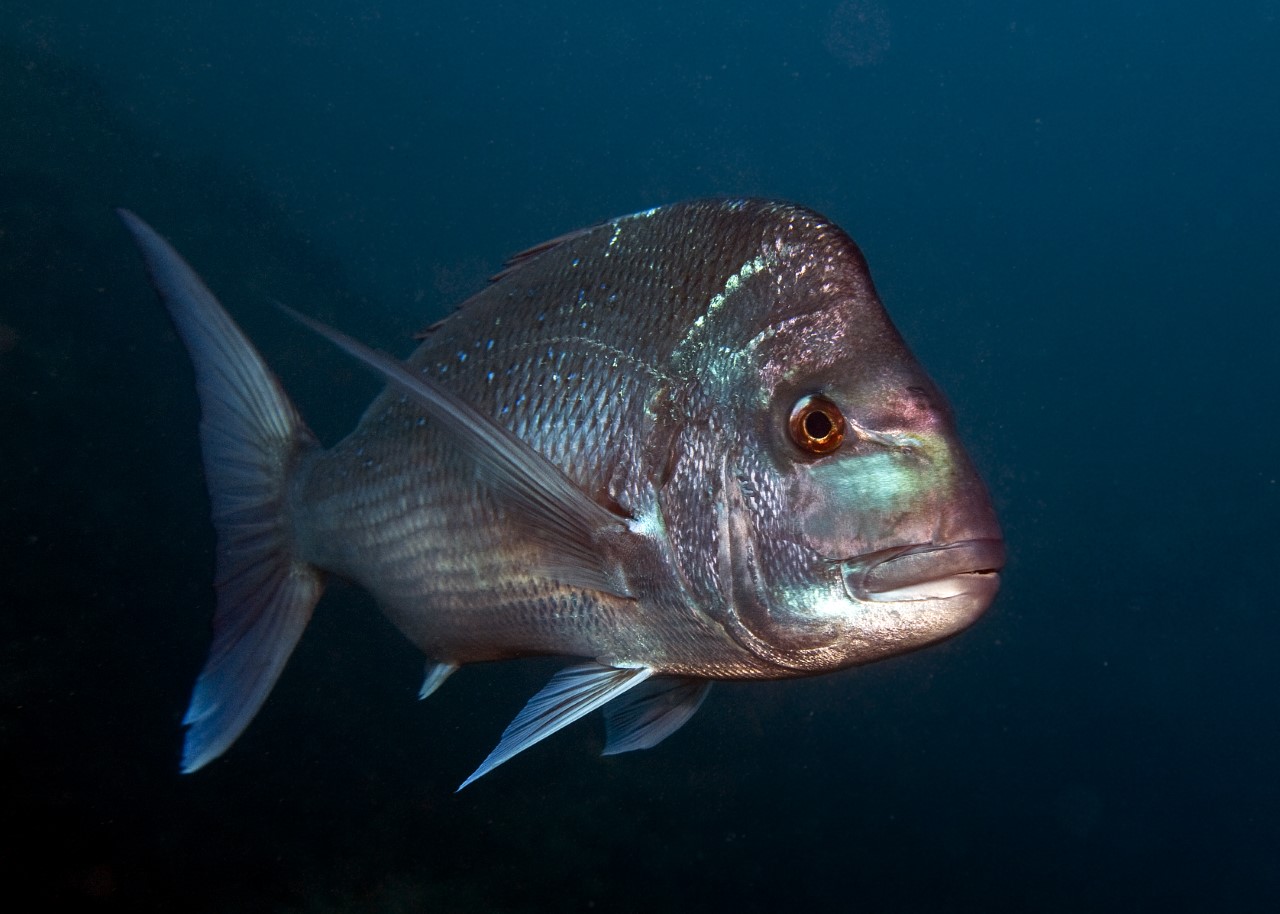
NSW Eyes The Future For Autonomous Vehicles
- Test and deploy CAVs on the road network
- Shape CAV policy, and customer outcomes
- Get the road network ready for CAVs
- Develop physical and digital CAV testing capabilities
- Support freight services automation
- Increase local CAV knowledge and skills
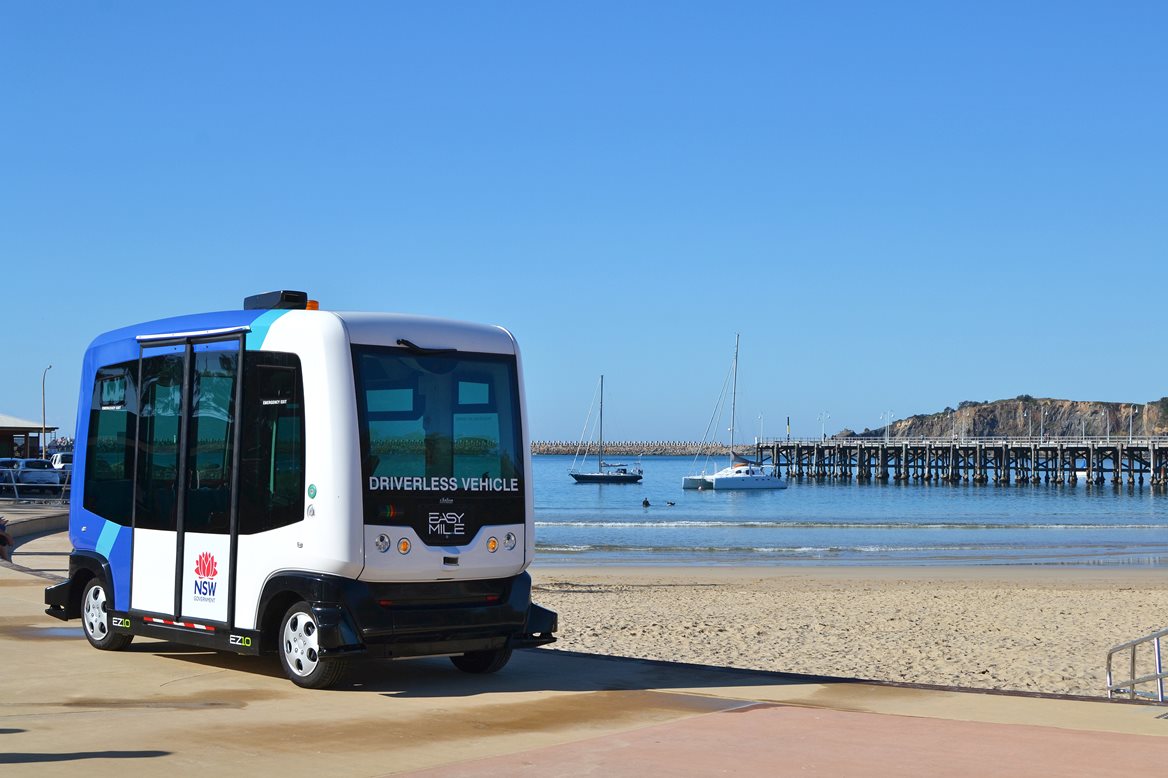
NSW Government Expanding The Dust Diseases Scheme And Protecting Worker Entitlements
- Diffuse dust-related pulmonary fibrosis
- Hypersensitivity pneumonitis
- Pneumoconiosis (any form)
- Silica-induced carcinoma of the lung
- Systemic sclerosis
A new Australian supercomputer has already delivered a stunning supernova remnant pic

Within 24 hours of accessing the first stage of Australia’s newest supercomputing system, researchers have processed a series of radio telescope observations, including a highly detailed image of a supernova remnant.
The very high data rates and the enormous data volumes from new-generation radio telescopes such as ASKAP (Australian Square Kilometre Array Pathfinder) need highly capable software running on supercomputers. This is where the Pawsey Supercomputing Research Centre comes into play, with a newly launched supercomputer called Setonix – named after Western Australia’s favourite animal, the quokka (Setonix brachyurus).
ASKAP, which consists of 36 dish antennas that work together as one telescope, is operated by Australia’s national science agency CSIRO; the observational data it gathers are transferred via high-speed optical fibres to the Pawsey Centre for processing and converting into science-ready images.
In a major milestone on the path to full deployment, we have now demonstrated the integration of our processing software ASKAPsoft on Setonix, complete with stunning visuals.
Traces Of A Dying Star
An exciting outcome of this exercise has been a fantastic image of a cosmic object known as a supernova remnant, G261.9+5.5.
Estimated to be more than a million years old, and located 10,000-15,000 light-years away from us, this object in our galaxy was first classified as a supernova remnant by CSIRO radio astronomer Eric R. Hill in 1967, using observations from CSIRO’s Parkes Radio Telescope, Murriyang.
Supernova remnants (SNRs) are the remains of powerful explosions from dying stars. The ejected material from the explosion ploughs outwards into the surrounding interstellar medium at supersonic speeds, sweeping up gas and any material it encounters along the way, compressing and heating them up in the process.
Additionally, the shockwave would also compress the interstellar magnetic fields. The emissions we see in our radio image of G261.9+5.5 are from highly energetic electrons trapped in these compressed fields. They bear information about the history of the exploded star and aspects of the surrounding interstellar medium.
The structure of this remnant revealed in the deep ASKAP radio image opens up the possibility of studying this remnant and the physical properties (such as magnetic fields and high-energy electron densities) of the interstellar medium in unprecedented detail.
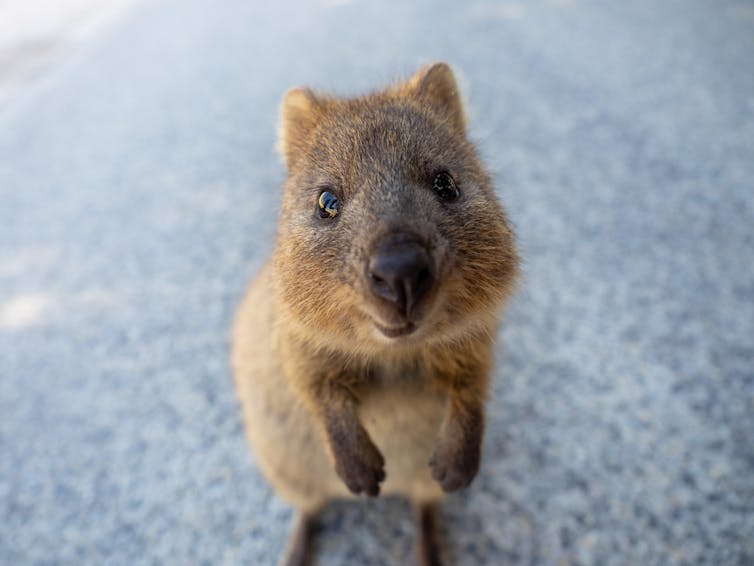
Putting A Supercomputer Through Its Paces
The image of SNR G261.9+05.5 might be beautiful to look at, but the processing of data from ASKAP’s astronomy surveys is also a great way to stress-test the supercomputer system, including the hardware and the processing software.
We included the supernova remnant’s dataset for our initial tests because its complex features would increase the processing challenges.
Data processing even with a supercomputer is a complex exercise, with different processing modes triggering various potential issues. For example, the image of the SNR was made by combining data gathered at hundreds of different frequencies (or colours, if you like), allowing us to get a composite view of the object.
But there is a treasure trove of information hidden in the individual frequencies as well. Extracting that information often requires making images at each frequency, requiring more computing resources and more digital space to store.
While Setonix has adequate resources for such intense processing, a key challenge would be to establish the stability of the supercomputer when lashed with such enormous amounts of data day in and day out.
Key to this quick first demonstration was the close collaboration between the Pawsey Centre and the ASKAP science data processing team members. Our teamwork enabled all of us to better understand these challenges and quickly find solutions.
These results mean we will be able to unearth more from the ASKAP data, for example.
More To Come
But this is only the first of two installation stages for Setonix, with the second expected to be completed later this year.
This will allow data teams to process more of the vast amounts of data coming in from many projects in a fraction of the time. In turn, it will not only enable researchers to better understand our Universe but will undoubtedly uncover new objects hidden in the radio sky. The variety of scientific questions that Setonix will allow us to explore in shorter time-frames opens up so many possibilities.
This increase in computational capacity benefits not just ASKAP, but all Australia-based researchers in all fields of science and engineering that can access Setonix.
While the supercomputer is ramping up to full operations, so is ASKAP, which is currently wrapping up a series of pilot surveys and will soon undertake even larger and deeper surveys of the sky.
The supernova remnant is just one of many features we’ve now revealed, and we can expect many more stunning images, and the discovery of many new celestial objects, to come soon.![]()
Wasim Raja, Research scientist, CSIRO and Pascal Jahan Elahi, Supercomputing applications specialist, Pawsey Supercomputing Research Centre, CSIRO
This article is republished from The Conversation under a Creative Commons license. Read the original article.
15 years of experiments have overturned a major assumption about how thirsty plants actually are
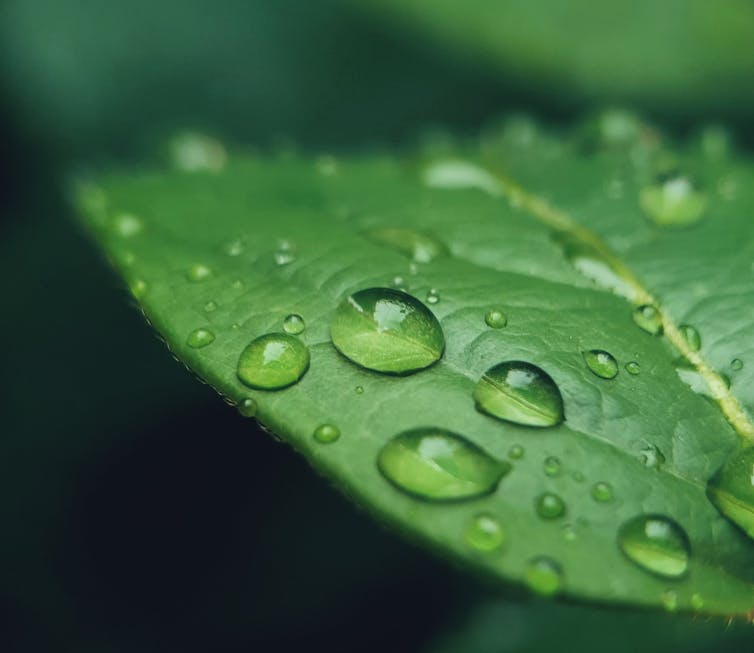
Have you ever wondered just how much water plants need to grow, or indeed why they need it? Plants lose a lot of water when they take in carbon dioxide from the atmosphere, so they need up to 300 grams of water to make each gram of dry plant matter.
But it doesn’t have to be that way. In a new paper published in Nature Plants, we report on a natural secret that could ultimately be used to help plants thrive while using less water.
An Essential Ingredient For Plant Growth
Plants are mostly made up of water – about 80% by weight. So we might expect plants would need around four grams of water for each gram of dry mass to achieve their ideal level of hydration.
That may be so, but they need a lot more water to grow. To produce one gram of new dry mass, a plant needs about 300 grams of water.
Why such a large difference between the amount of water required for hydration and the amount required for growth? Because almost all the water plants take up from the soil through their roots soon rises out into the atmosphere through their leaves.
Plant leaves are covered in microscopic valves called stomata. Stomata open to let in carbon dioxide from the air, which plants need for photosynthesis and growth.
But when the stomata are open, the moist internal tissue of the leaf is exposed to the drier outside air. This means water vapour can leak out whenever the stomata are open.
A Long-Held Assumption
Plant scientists have long assumed the opening and closing of the stomata almost entirely controlled the amount of water evaporating from a leaf. This is because we assumed the air in small pockets inside the leaves was fully saturated with water vapour (another way to say this is that the “relative humidity” is 100%, or very close to it).
If the air inside the leaf is saturated and the air outside is drier, the opening of the stomata controls how much water diffuses out of the leaf. The result is that large quantities of water vapour come out of the leaf for each molecule of carbon dioxide that comes in.

Why did we assume the air inside the leaves has a relative humidity near 100%? Partly because water moves from more saturated places to less saturated places, so we thought cells inside leaves could not sustain their hydration if exposed directly to air with relative humidity much lower than 100%.
But we also made this assumption because we had no method of directly measuring the relative humidity of the air inside leaves. (A recently developed “hydrogel nanoreporter” that can be injected into leaves to measure humidity may improve this situation.)
A Secret Revealed
However, in a series of experiments over the past 15 years, we have accumulated evidence that this assumption is not correct. When air outside the leaf was dry, we observed that the relative humidity in the air spaces inside leaves routinely dropped well below 100%, sometimes as low as 80%.
What is most remarkable about these observations is that photosynthesis did not stop or even slow down when the relative humidity inside the leaves declined. This means the rate of water loss from the leaves stayed constant, even as the air outside increased its “evaporative demand” (a measure of the drying capacity or “thirstiness” of air, based on temperature, humidity and other factors).
If the leaves restricted their loss of water only by closing their stomata, we would expect to see photosynthesis slowing down or stopping. So it appears plants can effectively control water loss from their leaves while stomata remain open, allowing carbon dioxide to continue diffusing into the leaf to support photosynthesis.
Using Water Wisely
We think plants are controlling the movement of water using special “water-gating” proteins called aquaporins, which reside in the membranes of cells inside the leaf.
Our next experiments will test whether aquaporins are indeed the mechanism behind the behaviour that we observed. If we can thoroughly understand this mechanism, it may be possible to target its activity, and ultimately provide agriculturalists with plants that use water more efficiently.
Over the coming decades, global warming will make the atmosphere increasingly thirsty for evaporated water. We are pleased to report that nature may yet reveal secrets that can be harnessed to boost plant production with limited water resources.
The authors would like to acknowledge the contributions to this work of Graham Farquhar, Martin Canny (deceased), Meisha Holloway-Phillips, Diego Marquez and Hilary Stuart-Williams.![]()
Lucas Cernusak, Associate Professor, Plant Physiology, James Cook University and Chin Wong, Visiting Fellow, Plant Sciences, Australian National University
This article is republished from The Conversation under a Creative Commons license. Read the original article.
Western Sydney University, Charles Darwin University (CDU) And The Menzies Partner To Establish The Northern Territory’s Own Medical School
 Western Sydney University – an Australian Medical Council accredited medical program curriculum partner – will collaborate with CDU to establish a high quality, relevant curriculum for the CDU Menzies School of Medicine. This is a critical step to enable the teaching of a medical program in the Territory and for the Territory.
Western Sydney University – an Australian Medical Council accredited medical program curriculum partner – will collaborate with CDU to establish a high quality, relevant curriculum for the CDU Menzies School of Medicine. This is a critical step to enable the teaching of a medical program in the Territory and for the Territory.Cystic Fibrosis: Causal Treatment Suitable From Childhood
Girls Slip Through The Cracks Due To ‘Referral Bias’: Australian-First Study

Evidence That Giant Meteorite Impacts Created The Continents
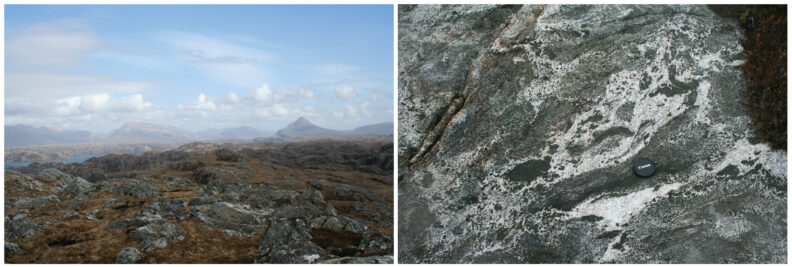
Tiny Optical Sensors Could Put An End To Hospital Bed Sores
Down On Vitamin D? It Could Be The Cause Of Chronic Inflammation
Disclaimer: These articles are not intended to provide medical advice, diagnosis or treatment. Views expressed here do not necessarily reflect those of Pittwater Online News or its staff.